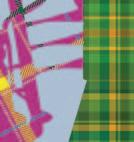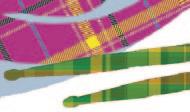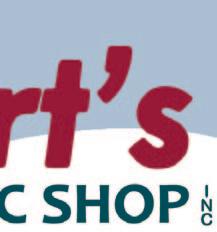






















As an educator, one of the most impactful ways to improve is by educating yourself. That’s why the Yamaha Educator Suite (YES) helps music teachers access professional development opportunities, music teacher resources, program health support, advocacy assistance and more. YES brings you a network of like-minded teachers, experts and professionals, who want to help you achieve your goals. Let us help you raise the bar. Go to Yamaha.io/educatorsAAB2
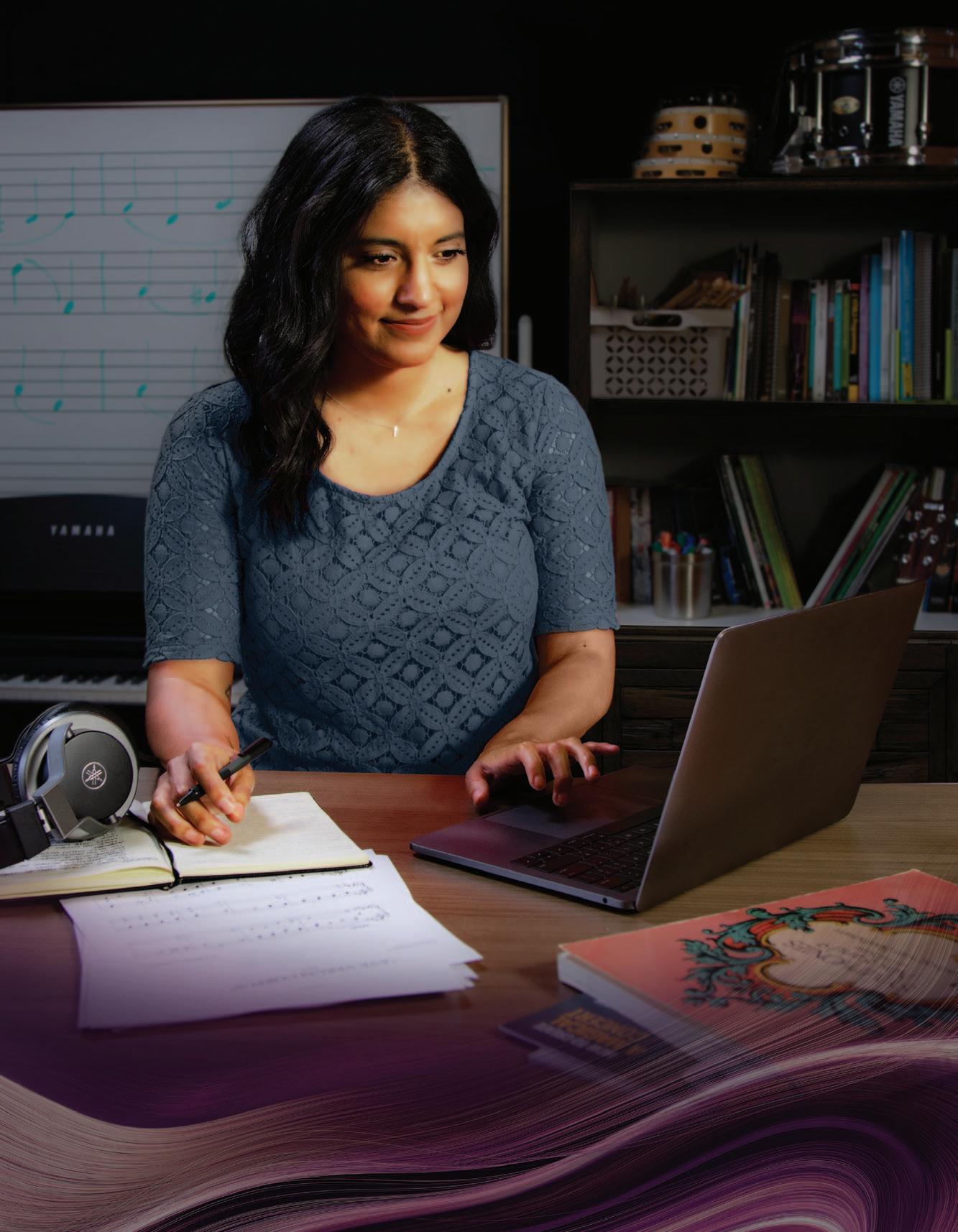
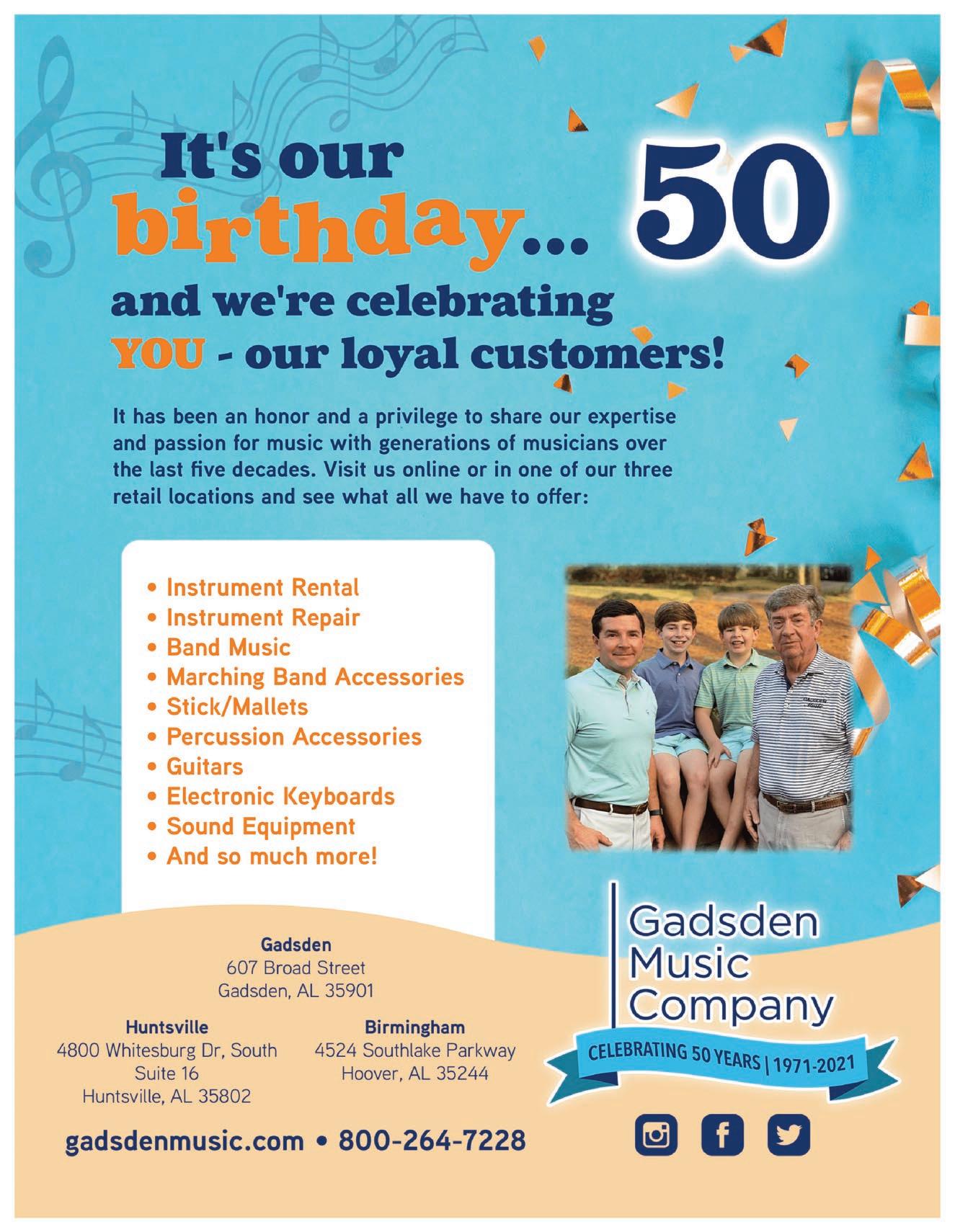
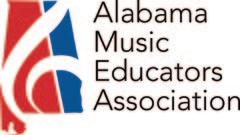
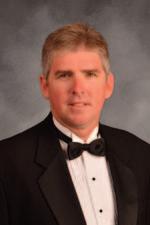
When I was a young boy, I loved racing. I was either racing on my bicycle, go-cart, three-wheeler or racing on foot. The most common way for us to begin the race, “back in the day,” was with the traditional, “On your mark, get set, GO!” Of course the ever popular long pause just before “Go,” would really raise the excitement and anticipation for the race. This summer has been very reminiscent to the long pause before the race begins. I could not wait to see the faces of my students and their smiles. The sounds of their instruments without bell covers or their voices unobstructed were sounds I looked forward to.
At the time I am writing this article, I have currently finished three days of band camp and I can say, without a doubt, the anticipation did not disappoint. This week has reminded me how powerfully rewarding normal interaction with my students can be in this profession. My desire is to never take for granted these moments and always recognize how important they are for the development of our students.
I hope you find yourself recharged, from a well deserved break, and as excited to get back to work as I am. I have heard some people refer to this past year as a “hard reset” for schools and in many ways I must agree. A hard
reset will clear your memory and close any unwanted applications running in the background that keep slowing down your computer. It is time for a new beginning.

The AMEA Governing Board met in person for the first time in over a year this past June. Seeing everyone in person after so long was incredibly enjoyable. For me it was the first step for us to begin the process of starting that new beginning.
During the summer, I organized a committee of leaders from the band, orchestra and vocal divisions to discuss updating the document, found on the state department’s website, for guidance for continuing music education. Our goal was to advocate for every child in Alabama to have unencumbered access to a full music education experience this year. I believe the new wording that was produced is consistent with this objective. Our hope is that your school system will see how valuable a well-rounded education, including music education, is for our students now more than ever. I would like to thank Joel Henson, Randall Fields, Daniel Stevens and Rob Lyda for the work they provided in this undertaking.
We all know how important music education is for our students’ social
I am optimistic this year will provide you with a chance, like no other time in our lives, to share the wonders of music with a group of people that may have forgotten how powerful the experience of music education can be.
and emotional well-being under normal circumstances. I am convinced that since the pandemic has forced such a socially deprived atmosphere for our students that music education can be the driving force to bring everyone back to a thriving emotional state.
During this past June, the AMEA leadership was able to attend the NAfME National Assembly virtually. I was proud to report to the other states the great successes Alabama had throughout the year with inperson All-State events and virtual performance assessments, as well as our successful virtual conference. I am extremely proud of the educators in our state and the work done to keep music alive in Alabama.
I would like to congratulate AMEA’s past president, Susan Smith, for her appointment earlier this year as the Chair of the NAfME Collegiate Advisory Council. Susan has brought a fresh approach to this position that resulted in an outstanding Collegiate Summit this summer as part of the National Assembly.
As we move forward, we are thrilled to host our 2022 Professional Development Conference face to face next January in Birmingham. The Governing Board is hard at work planning a great conference, and we believe it will be exciting, rejuvenating, and beneficial for you to attend.
The special impact music has in the
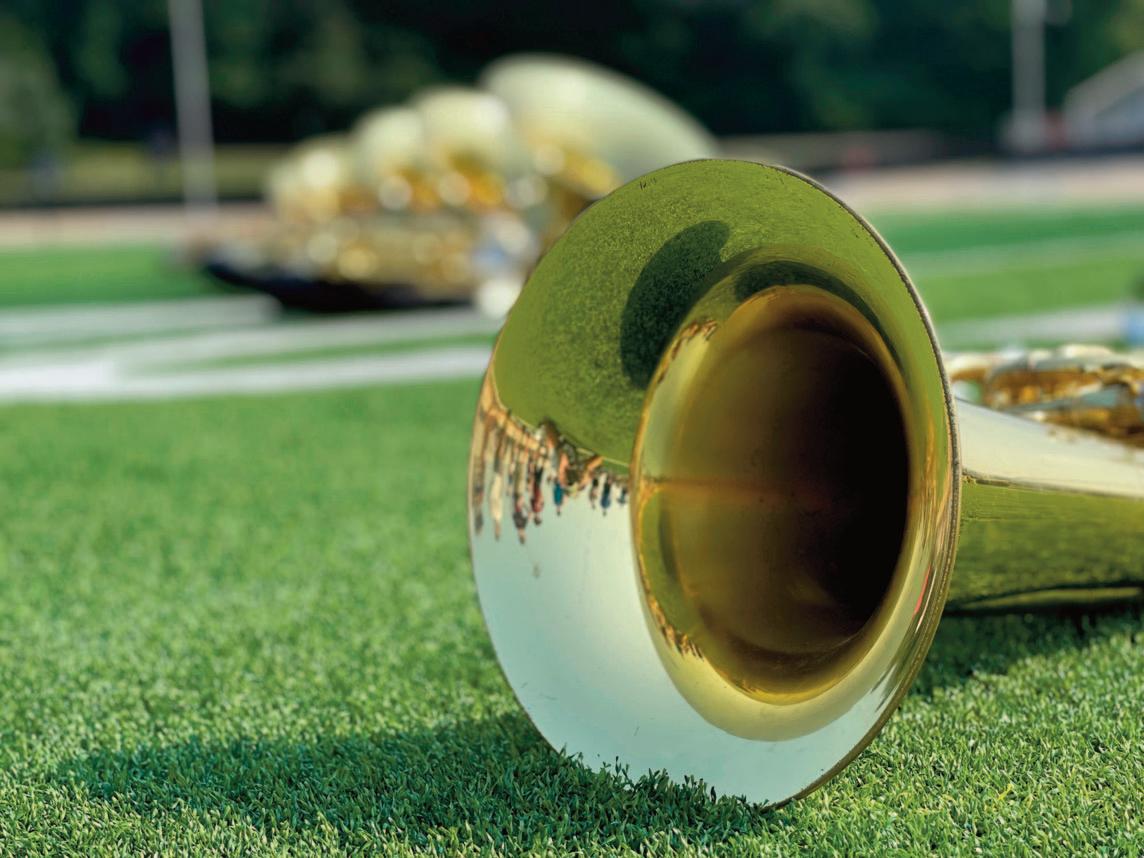
lives of all of us will be renewed with each event our students and community experience this upcoming year. I am optimistic this year will provide you with a chance, like no other time in our lives, to share the wonders of music with a group of people that may have forgotten how powerful the experience of music education can be.
What an incredible privilege we have to participate in this important adventure following the “hard reset.”
Now let’s get ready. On your mark, get set, GO!
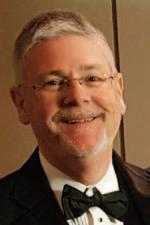

It is not too early to be thinking about our AMEA Conference in January, 2022. We will be celebrating the 75th anniversary of AMEA. Just remember, you must join NAfME, and you should pre-register if possible. A healthy organization is always concerned with growth and development, and the AMEA board is interested in growing our organization, and for getting all music teachers in Alabama involved in professional development through AMEA and NAfME. You can help increase our membership by communicating the benefits of membership to our colleagues. When you are joining or renewing your membership, think of those music teachers in your area that may not be active members, and send them a message inviting them to join! You could send an email with their contact information to me at treasurer_registrar @myamea.org and I will invite them!
Remember to: Remind your colleagues to join, include the new music teachers, invite the inactive music teachers and be involved as a mentor to the young music teachers.
Renew your membership now at www.nafme.org Membership in NAfME is required for participation in state MEA sponsored events like the AMEA Conference, the Elementary Division Fall Conference, All-state and Musical Performance Assessments. Joining NAfME secures your membership in AMEA and in your division.
Register now for the 2022 AMEA conference online at www.myamea.org. You will find it is easy and will save you time and money. Reunite with friends and colleagues from all over the state in January. Rejuvenate your energy, renew your enthusiasm, and join us as we celebrate the 75th anniversary of AMEA!
1996 Johnnie Vinson
1998 Michael Meeks
1975 Frances P. Moss
1976 S . J. Allen
2000 John McAphee , Jr .
2002 Tony Pike
2004 Becky Rodgers
2006 John Baker
2008 Pat Stegall
2010 Steve McLendon
2012 Sara Womack
2014 Carl Hancock
2016 Susan Smith
2018 Greg Gumina
2020 David Raney
President
David Raney
Sparkman High School
2616 Jeff Road Harvest, AL 35749 256-837-0331
draney@madison.k12.al.us
Immediate Past President
Greg Gumina
Shades Valley High School
6100 Old Leeds Road Irondale, AL 35210 (205) 956-4638
ggumina85@gmail.com
President, AOA
Daniel Stevens University of North Alabama One Harrison Plaza Florence, AL 35631 (256) 765-4708 dstevens1@una.edu
President, AMEA Collegiate
Emma Tosney (205) 306-8365 ejtosney@crimson.ua.edu
Industry Representative Gadsden Music Company 607 Broad Street PO Box 132 Gadsden, AL 35901 205-910-2622
jmharbison@aol.com
Executive Director Editor, Ala Breve

Garry Taylor 1600 Manor Dr NE Cullman, AL 35055 (256) 636-2754





executive_director@myamea.org
Garry Taylor, Editor & Advertising Manager 1600 Manor Dr NE Cullman, AL 35055 (256) 636-2754







executive_director@bellsouth net
President-Elect
Rob Lyda
Cary Woods Elementary School
715 Sanders Street Auburn, AL 36830 334-663-0898 lydarob@me.com
Recording Secretary
Carla Gallahan
113 Long Hall
Troy University Troy, AL 36082 (334) 670-3502 recording_secretary@myamea.org
President, AVA
Randall Fields
Bob Jones High School 650 Hughes Road Madison, AL 35758 (256) 772-2547
randall.fields.ava@gmail.com
AMEA Collegiate Advisor
Meghan Merciers University of North Alabama UNA Box 5040 142 Music Building Florence, AL 35632-0001 (256) 765-4518 mmerciers@una.edu

Assistant Executive Director


Rusty Logan 2020 Janabrooke Lane Auburn, AL 36830 (334) 663-1702
rlogan9853@gmail.com
ADVERTISING & COPY DEADLINES
Fall - August/September (Back to School) issue: July 15

Winter - October/November (Conference) issue: September 15
Spring - May/June (All-State) issue: January 15
Summer - May/June (Digital Only) issue: April 15
Treasurer/Registrar
Pat Stegall
AMEA Registration PO Box 3385
Muscle Shoals, AL 35661
treasurer_registrar@myamea.org
President, ABA
Joel Henson
Pelham High School 2500 Panther Cir. Pelham, AL 35124 (205) 616-7478
jhenson@pelhamcityschools.org
President, ELEM/GEN
Sarah McLendon Hillcrest Elementary 400 E Watts St. Enterprise, AL 36330 (334) 313-2116
smclendon@enterpriseschools.net
President, HED Division
Michael Zelenak
Alabama State University 915 S. Jackson St. Tullibody Music Hall Room 208 Montgomery, AL 36104 334-604-9187
Alabama Department of Education Arts Education Specialist
Andy Meadows 50 North Ripley Street Montgomery, Alabama 36104 (334) 694-4768
ameadows@ALSDE.edu
Unless otherwise indicated, permission is granted to NAfME members to reprint articles for educational purposes. Opinions expressed in this publication are not necessarily those of AMEA or the Editor. All announcements & submissions are subject to editorial judgement/revision.The Alabama Music Educators Association is a state unit of NAfME: The National Association for Music Education, a voluntary, nonprofit organization representing all phases of music education in schools, colleges, universities, and teacher-education institutions. Active NAfME/AMEA membership is open to all persons engaged in music teaching or other music education work.

I hope you have had a great summer break and are refreshed and ready for a new and exciting new year. I’m sure we all look forward to reconnecting with our students and colleagues. Your AVA board had a productive summer board meeting and work session in June. We planned for all our AVA events to look more normal this year. Some highlights of the exciting AVA offerings for the year are below (please check myamea.org/ava for the most updated calendar):
Fall Workshop will be on September 10. Our ● keynote speaker is Jaclyn Normandie-Johnson, author of The Mindful Musician: Finding a Healthy Balance, lecturer, choral clinician, and Wellness Life Coach. There will also be reading sessions, and other professional development interest sessions led by our colleagues from around the state.
conference. Honor Choir is open to students in grades 9-12. This year’s Honor Choir will be a contemporary/vocal jazz choir. Information regarding screenings in each district will be available soon.
● State Choral Performance Assessments as well
All-State will be March 10-12 in Birmingham.
● as Solo and Ensemble Adjudications will be held in person in each district.
All-State Auditions will be face to face rather than
● virtual this year. We will continue to explore the possibility of virtual auditions in the future.
All-State Show Choir Auditions will be virtual ● again this year.
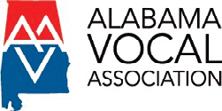
If you haven’t already done so, now is the time to renew your NAfME membership so you and your students are eligible to take full advantage of AVA offerings.
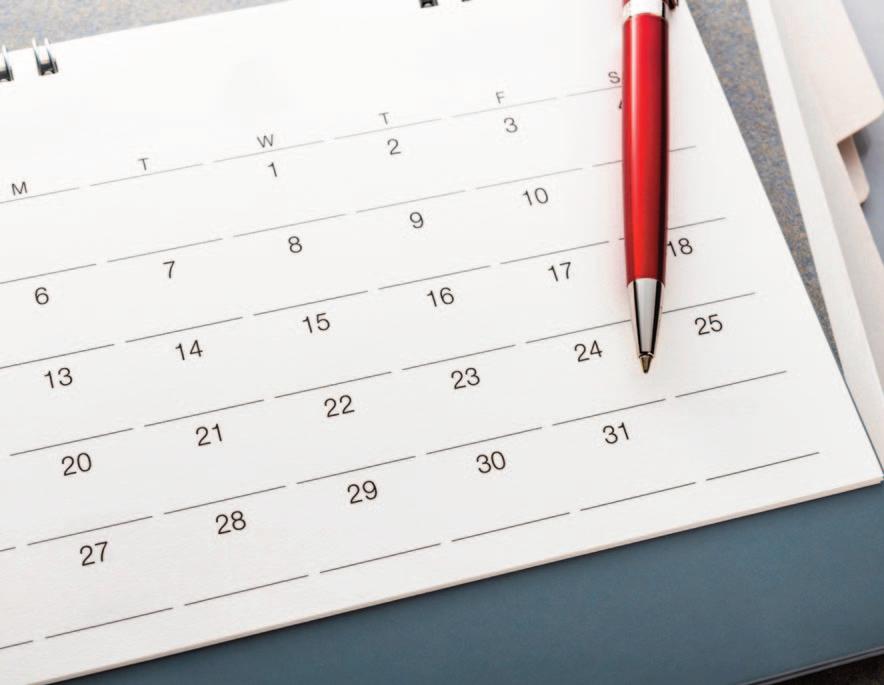
AMEA Conference will be in Birmingham January
● 20-22, 2022. Please plan to attend this professional development opportunity. There will be sessions for Elementary, Middle, and High School Teachers, and performances by some outstanding Alabama choruses. All-State Show Choir and Alabama Honor choir will also be a part of the conference.
All-State Show Choir will be January 20-22 at the ●
AMEA conference. Auditions will be virtual.
Honor Choir will be January 20-22 at the AMEA
I am pleased to announce that Meg Jones has been hired as the Executive Secretary, and Jim Schaeffer has been hired as the Webmaster. They had both been serving in these positions as interim employees. I thank them both for their willingness to continue to serve our vocal association.

Wishing you the best as you begin your school year,
Randall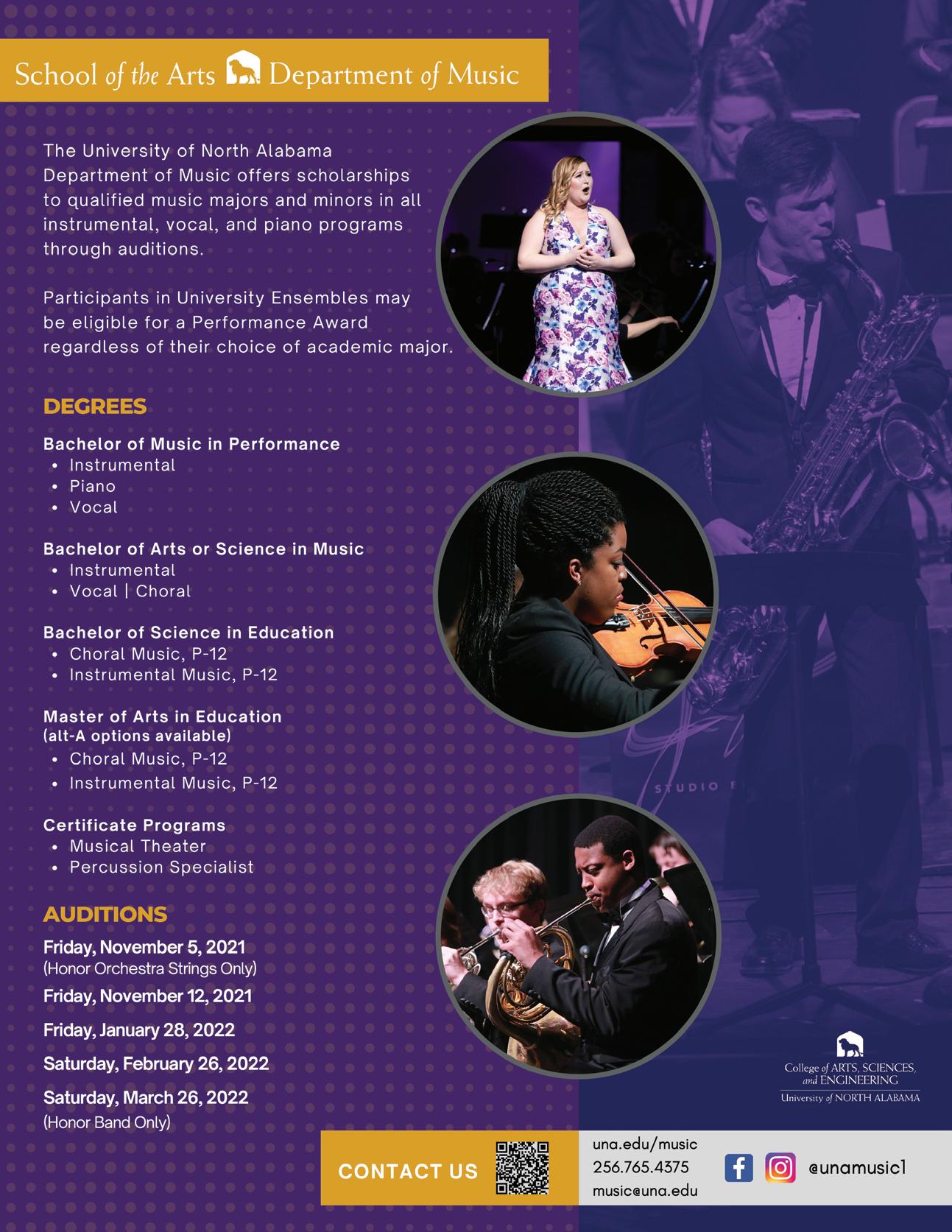


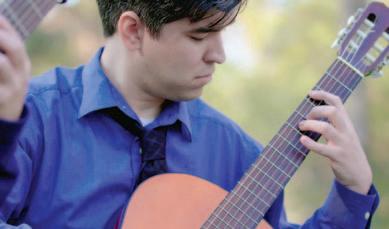
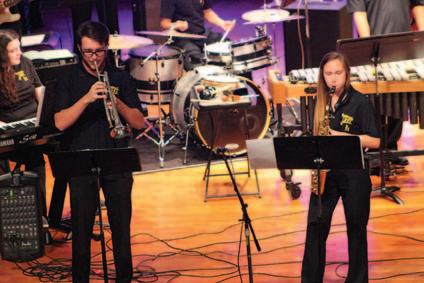
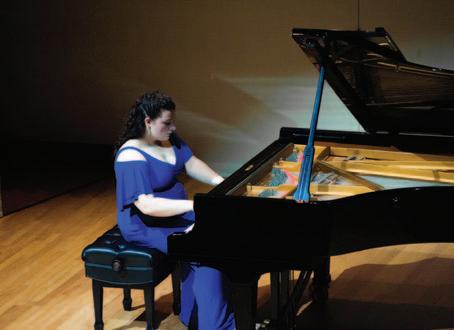
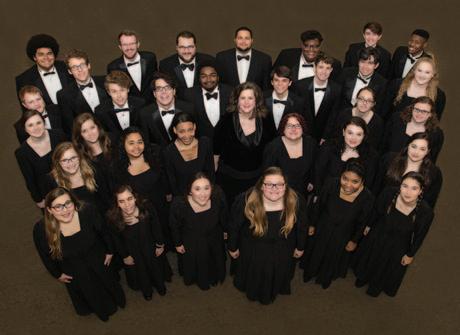
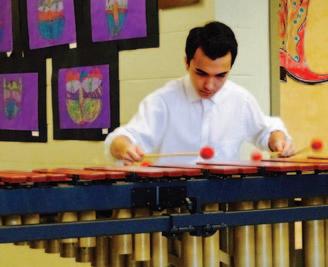

Welcome back, music educators!
Hopefully, you’ve had a chance to recharge and are ready for a new school year. Very exciting. Along with the excitement, this is a perfect time to renew your sense of purpose. The work we do is important and your involvement with professional organizations provides benefits to you, your institution, community, and state. In this article, I will highlight several opportunities that you can use to bolster your tenure application or simply keep your energy flowing. Here are a few opportunities to consider
Contribute to NAfME’s strategic • plan. Mackie V. Spradley, NAfME president, has invited everyone to participate in the creation of a new strategic plan for the organization. Specific areas of interest are Research, Music Teacher Education, Advocacy, Educational Policy, and Professional Learning & Growth. Check the NAfME.org website for updates. Become active in one of • NAfME’s societies or councils. NAfME sponsors several societies and councils that have focused agendas. If you are interested in research, jazz education, or any number of topics, go to
https://nafme.org/community/s ocieties-and-councils/ to get started.
Learn a new skill, or polish an • old one. NAfME Academy offers pre-recorded webinars with hands-on strategies in a variety of areas. Scroll down. There is something for everyone on this site
https://nafme.org/community/e learning/nafme-academycontent/
Submit an article for publication. •
Whether you write by yourself, with a colleague, or with a student, professional journals such as Ala Breve, Music Educators Journal, and Journal of Research in Music Education are actively looking for manuscripts. Bennett Reimer once stated, “Writing and reading deepen our thinking.” Submitting an article to a professional journal can be a very rewarding experience. The reviewers’ comments are invaluable and may help shape your thoughts about the topic. As a side note, be aware that General Music Today is now the Journal of General Music Education (JGME).
Accept a leadership role in the • AMEA. The Alabama Orchestra Association is currently looking for a webmaster and will be looking for an executive director in 2022. Contact Daniel Stevens at dstevens1@una.edu if you are interested. In addition, the Higher Education Division will hold its election of officers at the 2022 AMEA Conference HED Luncheon. Join us for a bite to eat and throw your hat in the ring.

Give collegiate students a helping • hand. Attend the C-NAfME Fall Summit at 2:00 pm on Oct. 24 at the University of Alabama. Or, if you are a music teacher educator, participate in the Festival of Music Lessons. This event will premiere at the 2022 AMEA Conference in Birmingham. Professors with an understanding of the edTPA portfolio assessment are needed to judge applications and facilitate the event. Contact me at mzelenak@alasu.edu for additional information.
New opportunities are everywhere. If last year was one of the worst of years, why not make this year one of the best? Get involved and make a difference!
Birmingham-Southern College
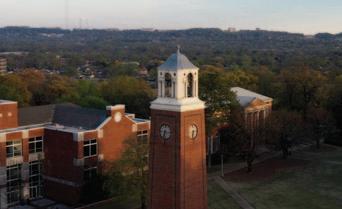
FACULTY
Dr. Jeremy Grall, jgrall@bsc.edu
Associate Professor of Music

Dr. Jeff Kensmoe, jkensmoe@bsc.edu
Associate Professor of Music and Director of Opera
Dr. David Phy, dmphy@bsc.edu
Assistant Professor of Music and Director of Bands
Dr. Lester C. Seigel, lseigel@bsc.edu
Joseph Hugh Thomas Professor of Music
Symphonic Band
Athletic Band
Jazz Band Concert Choir
Hilltop Singers Guitar Ensemble Southern Chorale Opera Workshop
DEGREES OFFERED
Bachelor of Arts (BA) with a major or minor in music
Bachelor of Arts (BA) with Disciplinary Honors in Performance
Bachelor of Musical Arts (BMA)
As a collegiate educator to 80+ instrumentalists (and parent of two teenagers), I quickly recognized the pandemic’s harmful effects on everyone’s loss of community. Zoom graduation ceremonies delayed concerts, canceled school trips, hybrid instruction, and masked school hallways led to most finding a social circle behind the veil of a gaming avatar, TikTok video, or funny meme. As we re-emerge from our personal refuge, it is time to engage students through the power of music in new, enlightening ways.
I am thankful for an incredible, forward-thinking Alabama Orchestra Association Leadership Team (21 in all) that tirelessly works to provide all student instrumentalists with appealing, educationally-rich experiences that propel them to compete on a national level. Here are a few new opportunities to engage and inspire with us, and we enter the 2021-2022 year:

● All-Region Orchestras – Woodwind, brass, and percussion colleagues around the state have asked for AOA to open more seats for their students to participate in a full orchestra. In response, Fall 2021 virtual auditions will qualify woodwind, brass, and percussion students to perform in the Alabama AllState Orchestra OR one of the North/South Alabama All-Region Orchestras. With six full orchestras (instead of two), we hope students will be encouraged to compete through audition. (Note – string students will be required to participate at the region AND state levels)
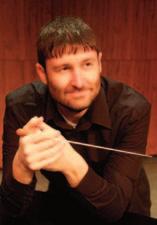
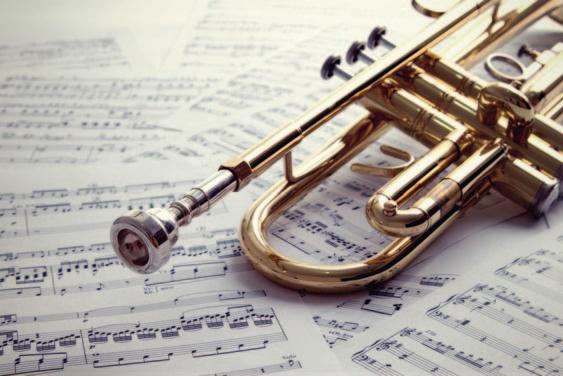
● Engaging AOA Leadership Team – With the addition of new regional events, AOA asks you to consider leadership with us. Whether serving as an event volunteer or host school, co-district chair, or rising to the state leadership team, we openly welcome new ideas to the organization. We want to be collaborative, inclusive, and a strong advocate for you and your students.
● New School Orchestra Programs – If you are a school administrator, our AOA Executive Team wants to work with you on developing a new string program in your local school. As a complement to excellent band and choral programs around the state, a string program appeals to the diverse student willing to find their unique voice and will place your school district on the map for prospective families (will help propel district population and revenue growth)
● Master Calendar – Thanks to a masterful AMEA, ABA, and AVA leadership, we have worked tirelessly over the past year to open communication across divisions, craft coordinated schedules, and support the great work of all AMEA divisions around the state. Updated details can be found at alabamaorchestraassociation.org on August 1, 2021
I continue to be impressed by the resilience of our orchestra programs, and their never-ending commitment to their musicians. I am inspired by your commitment to engaging communities with the value of music. Please know that my door is always open at dstevens1@una.edu


 Dr. Meghan Merciers, Advisor
Dr. Meghan Merciers, Advisor


The 2021-2022 AMEA Collegiate Executive Board and Advisor have been busy planning many exciting events for the upcoming school year. The 2021 Collegiate Summit, Connect, will occur on October 24 at the University of Alabama. We hope to see student participation from colleges and universities all across the state of Alabama. This event will allow students to reconnect once again in person, although some sessions will be available via Zoom for those unable to attend live. Our attendees will also be provided opportunities for professional development, such as participating in a new teachers panel and breakout sessions with experienced music educators. Our keynote speaker is Dr. Ruth Brittin, Chair of the Department of Music Education at the University of the Pacific in Stockton, California. Guest speakers from across the state of Alabama include Margaret Heron (Choral Director and AP Music Theory Instructor at Mortimer Jordan High School and North Jefferson Middle School), Dr. Daniel Stevens (Professor and Conductor of Shoals Symphony at UNA and Alabama Orchestra Association President), and Amber Hartley (General Music Teacher and Director of the Brookwood Elementary Orff Ensemble).
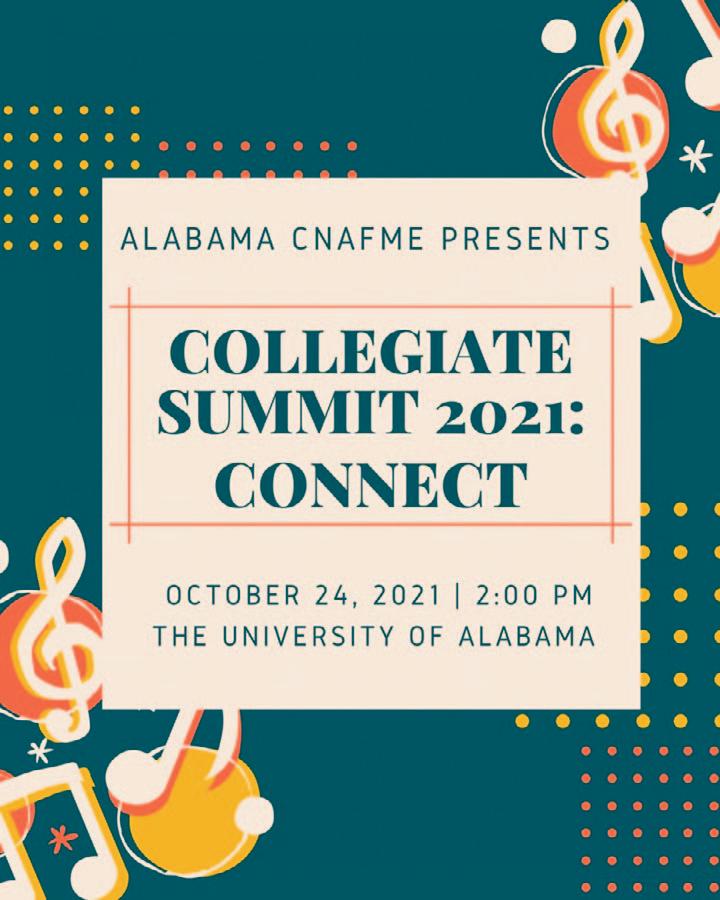
We are partnering with Dr. Michael Zelenak and the Higher Education Division of AMEA to present the first-ever Lesson Planning Competition. College students will be asked to submit three lesson plans using the edTPA framework. A panel of university music education specialists will review submissions and choose the top finalists for the competition. These finalists will present one lesson in front of fellow collegiate colleagues at the AMEA Conference in January 2022. This competition will challenge students to grow in their lesson-planning skills, overcome lesson-planning anxiety, expand their understanding of the edTPA framework, and network with their peers.
We hope through both of these events that our collegiate colleagues are encouraged, challenged, and inspired, as well as introduced to a broader scope of music educators across the various divisions AMEA has to offer. In closing, we have decided to move the ALcNAfME Collegiate Newsletter to a quarterly email to align more closely with the Ala Breve releases. We wish to continue boosting enrollment and participation through this newsletter and highlighting active chapters from all over the state.
Do nothing. That is a terrifying thought for me. I am always thinking about what I have to get done next. Finish one task and move on to the next. I have to get this finished so I do not fall behind.
“Life is all about balance. You don’t always need to get stuff done. Sometimes it’s perfectly okay, and absolutely necessary, to shut down, kick back, and do nothing.” - Lori
DescheneWe all had a year, unlike any other year. We encountered numerous obstacles that seemed insurmountable. However, we all know that music teachers are superheroes! We managed to teach, love, and inspire our students just like any other year. We taught lessons in new, fresh, and innovative ways. We creatively figured out how we would be able to get music manipulatives in the hands of our students. We are rock stars!
If there was ever a summer when we needed rest, this one was it. “The best six doctors...are sunshine, water, rest, air, exercise, and diet.”

Go outside! Go to your happy place: the beach, the lake, the mountains, even your own backyard. Enjoy the fresh air. Smell the flowers and the grass. Listen to the birds sing and the breeze as it moves the branches in the trees. Feel the soft grass or sand under your feet. Embrace the sunshine as it warms your face. Take a walk. Notice the natural beauty all around you. The sunrises and sunsets are beautiful paintings every day. The bright rainbows glow after the summer rain showers. Taste the fresh foods of summer. There is nothing better than fresh fruits and vegetables straight from the vine...except maybe my mother-in-law’s homemade peach ice cream, but that counts as a fruit, right?
Our students need us! They need us to be 100% there. We must take care of ourselves to be able to take care of others. Do not think you are being selfish when you take some time for yourself. Rest, recharge… “kick back and do nothing.”
SHAKE Back to School Workshop, Lea Hoppe, Clinician
Saturday, August 14, 9am-12pm
Vestavia Hills Elementary East, Free
East Alabama Workshop
Sandy Lantz & Gretchen Wahlberg, Clinicians
Saturday, August 28, 9am-12pm via Zoom, Free
AMEA Elementary Festival
Jeremy Howard & Rhonda Tucker, Clinicians
Friday, October 15, Eastmont Baptist Church
AMEA/AOSA/SHAKE Fall Workshop
Rhonda Tucker, Clinician
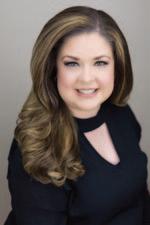
Saturday, October 16, 9am-12pm, Eastmont Baptist Church $25
AMEA Conference, Tiffany Taylor English, Featured Clinician
January 20-22, 2022, Birmingham, Alabama

The All-National Honor Ensembles represent the top performing high school musicians in each state across the country.
Participants will learn from renowned conductors and showcase their musicianship during 昀nal virtual concerts January 22–24, 2022.
• Concert Band led by Travis Cross
• Symphony Orchestra led by LaSaundra Booth

• Mixed Choir led by Geo昀rey Paul Boers

• Jazz Ensemble led by Todd Stoll
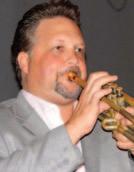

• Guitar Ensemble led by Olga Amelkina-Vera

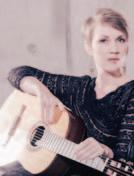
• Modern Band led by Spencer Hale
Audition Deadline: September 15, 2021, 11:59 PM ET
Learn more: nafme.org/ANHE
As we embark on a new school year, there is growing excitement that we will be able to do things with a greater sense of normal. However, we need not forget the things that helped us survive professionally in one of the most challenging years of our careers.
Keep the main thing the main thing: The students have and should always be our primary focus. During the pandemic, it was our goal to give the students the best experience possible under the circumstances. There were very few pictures of students celebrating trophies or traveling on their annual spring trip. It was an accomplishment to even have band and keep everyone healthy and safe. As we move forward, it should be our goal to make every decision one that makes our students’ band experience memorable and life-changing.
One of the most eye-opening experiences for me was watching the social media posts when we lost one of our legends and one of my mentors, Jim Duren. None of the posts focused on the amazing performances and accolades that his ensembles received. It was all about the incredible human being that he was and
how much he invested in their lives. The pandemic taught me to never take anything for granted and to live in the moment. We never know how much a high five or a smile can impact a student’s life. Our students need us now more than ever.
Collaborate: We are in this together. There is no doubt that collaboration among colleagues improved dramatically during the pandemic. Directors across the state were racking their brains trying to figure how to manage their way through the pandemic. There was very little concern for who had the best ideas. People were sharing and helping in any way that they could without seeking reward or recognition. Who knew that a puppy pad or a surgical bootie would be an essential part of a band rehearsal? Directors went from competing with their colleagues to sharing ideas willingly with one another. This allowed our profession to succeed in difficult times.
Advocate: The importance of band and music education became obvious when it wasn’t feasible to have it in its normal form. Our students lost their creative outlet and the place where they felt a part of a group. Many football game halftimes and parades
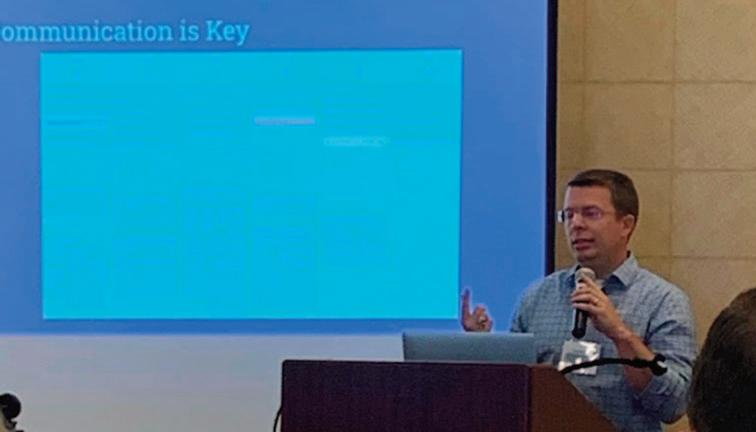
happened without the normal pageantry that a band brings to those environments. What we found, through the pandemic, is that students and our communities need band. Due to the decreased presence of our band programs, loss of numbers, and the need for instructional remediation, many programs face great uncertainty. Consequently, we must advocate for our students and each other as often as possible.
Persevere: This past year has proven that music educators are some of the most dedicated professionals in the world. We didn’t allow obstacles to keep our kids from getting a quality band experience. I saw evidence of this every day in your classrooms. Some of the things we once toiled over have become minor bumps in the road. Imagine what a first-year teacher can do if they survived their first year in the midst of this pandemic. I believe that pushing through this adversity together has made our profession stronger for years to come.
It’s Just Band: We all love band. We all love our profession. We all love our students. However, we can only control what we control. The pandemic has taught us many lessons including the need for balance in our lives and the lives of our students. This past year, I saw evidence of colleagues finding ways to destress and stay healthy. We can only give our students our best if we feel like being there. Continue to find outlets that take you away from the activity so that you can be your best when you are there. Band is important. However, it should be a part of our life…..not our life.
I am humbled at the opportunity to serve as President of the Alabama Bandmasters Association. I look forward to the coming years as we work together to make the bands in Alabama the best we can for the students we serve.
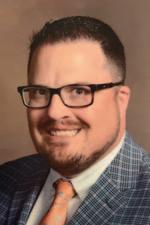

Updates from the Summer Conference:

The ABA board voted to move • both our state-level All-State chair auditions and the preliminary Solo Festival auditions permanently to a virtual platform using Heartout. The 4-year data is being restarted • in 2021 to help guide future policy. The goal is to collect data for four years and allow it to guide future policy decisions. Proposal 2020-6 considering redistricting was withdrawn.
The new online home for ABA • will be www.alaband.org. We hope that the new website will go live in early August. Every director will need to register and create a profile for future correspondence.
Article XVI Section 2 Classification of Bands. Replace Article XVI, Section 2 (See the Bylaws on the ABA section of www.myamea.org) with:
a.For the purposes of the ABA Music Performance Assessment, bands will be classified based on the level of the director’s chosen selection:
i. Classifications
Level VI Bands will play a composition from the Grade VI ABA Cumulative List
Level V Bands will play a composition from the Grade V ABA Cumulative List
Level IV Bands will play a composition from the Grade IV ABA Cumulative List
Level III Bands will play a composition from the Grade III ABA Cumulative List
Level II Bands will play a composition from the Grade II ABA Cumulative List
Level I Bands will play a composition from the Grade I ABA Cumulative List
ii. Sight Reading
Bands Classified as Level VI will sight read at UIL Sight Reading Level VI. Bands Classified as Level V will sight read at UIL Sight Reading
Level V. Bands Classified as Level IV will sight read at UIL Sight Reading Level IV. Bands Classified as Level III will sight read at UIL Sight Reading Level III. Bands Classified as Level II will sight read at UIL Sight Reading Level II. Bands Classified as Level I will sight read at UIL Sight Reading Level I. b. From the pieces chosen by the director for performance at Music Performance Assessment, ONE COMPOSITION must be from the approved Alabama Bandmasters Association (ABA) Cumulative Music List. c. If a band plays more than one composition off the ABA Cumulative Music Lists, bands will be classified by the director’s chosen selection. d. Any band can choose to sight read at a higher level. This request must be made at the MPA check-in table before their scheduled warm-up time. Notes: For the purposes of this legislation, the following changes will be made to the ABA Cumulative Music List: Class AA will be renamed to Level VI. Class A will be renamed to Level V. Class BB and Class B will be combined and renamed to Level IV. Class CC will be renamed to Level III. Class C will be renamed to Level II. Class D will be renamed to Level I. This eliminates E-H.
Article XV. All-State Festival and Auditions, Section 2 letter b (See the Bylaws on the ABA section of www.myamea.org)
This legislation will eliminate the piccolo audition at the district level. The piccolo position will be offered to the first chair flute player of each band. If they decline or don’t own a piccolo, it will then be offered to the 2nd chair flute player, and so on until the position is filled.
Proposal 2022-3 - Eb Clarinet and Alto Clarinet assignments for All State band
Article XV. All-State Festival and Auditions, Section 2 letter b (See the Bylaws on the ABA section of www.myamea.org)
This legislation will remove Eb Soprano Clarinets and Alto Clarinets entirely from the All-State standardized instrumentation. These instruments were part of the “Standardization of Instrumentation for School Bands” written in 1928 by John Philip Sousa, Frederick Stock, Edwin Franco Goldman, Captain Taylor Brandon, and Herbert L. Clarke. Eb Soprano Clarinets and Alto Clarinets are no longer considered standard in wind band instrumentation, and therefore, are obsolete within the Alabama All-State quota system. If the Eb Soprano Clarinet or an Alto Clarinet is needed for a piece of literature, students in the clarinet section can be approached starting with the first chair (similar to how soprano sax parts are covered by alto sax players starting with first chair).
 by C. David Ragsdale
by C. David Ragsdale
Greetings, colleagues! It is my pleasure to return to Ala Breve for a second stint as the Wind Band Music Reviewer, having previously served in this role under AMEA President, Carl Hancock from 2014-16. I am grateful to President David Raney for the invitation to serve again and I join the entire association in thanking David for his leadership during this pivotal time for our state and profession. Through these articles, I hope to contribute in a meaningful way to the general discourse about the core of our curriculum, the REPERTOIRE! I will endeavor to highlight new gems and old chestnuts in the wind band literature across all difficulty ranges and warmly welcome your suggestions, input, and questions along the way.
One year ago at this very time, I must admit to being somewhat paralyzed by the thought of programming for a Fall semester unlike any we have ever seen. As we all weighed the various scenarios and obstacles to rehearsing and performing, there was a certain amount of trepidation in selecting repertoire appropriate to the ever-changing landscape of COVID-era wind band. Happily, as we emerge from a year where masking/distancing strategies and flex arrangements (a wonderful outcome of the pandemic, by the way) dominated our discussions, this coming Fall is feeling a bit more secure as we eye a more “normal” mode of operation, giving us all a renewed sense of relief and joy.
That’s why I’m choosing to focus my own Fall repertoire selections and this first column on a theme of Joy. Now, normally, I am quite opposed to thematic concert programming because I feel that it lures us into making repertoire decisions based on a work’s fitness for our theme as opposed to its fitness for our ensemble. But just this once, I hope you will indulge me as I focus on some works that may give a much-needed sense of healing, joy, and optimism to our students and audiences.
First, allow me to commend to you Steve Danyew’s new setting of “Amazing Grace.” Certainly, there are numerous settings of this timeless classic from which to choose, but Steve’s refreshing, just-released arrangement is a worthy and timely addition to the collection. The medium difficulty setting features a rich and powerful center chorale,
bookended by quiet, contemplative writing for its opening and closing material. It features a soaring flute solo as well as four-part clarinet divisi and six percussion parts balanced by otherwise standard instrumentation. The 4.5-minute grade four arrangement, commissioned by Catherine Rand and the University of Southern Mississippi Wind Ensemble is available directly from the composer at stevedanyew.com.
Other works that will find their way into my joyful programming this year will be Steven Bryant’s “Radiant Joy,” a truly joyous - even groovy - work for advanced ensembles. The 2007 Revelli Award winner is catchy and fun for players and audiences alike. Alfred Reed’s “Alleluia! Laudemus Te” is a celebratory anthem and medium-advanced tour de force with optional organ and enough firepower for use as a concert opener or closer. Finally, we are no doubt all fond of Gustav Holst’s “Jupiter: Bringer of Jollity” from the “Planets” suite - an example of the grandeur and joyous spirit unmatched in the entire symphonic repertoire. Fortunately, there are numerous quality arrangements of “Jupiter” for band across the entire ability spectrum, from Paul Barker’s easy flex arrangement to rich-yet-accessible full band settings by Mark Williams, Robert W. Smith, and Michael Story, to name a few. Fuller medium-difficulty arrangements by Jim Curnow and William Owens are well done and, of course, authentic transcriptions for advanced ensembles by Merlin Patterson and others have long been a valued mainstay of the transcription literature.
I wish you all the best for a joyful Fall term. Please do not hesitate to let me know if I may be of assistance to you or your program.
Dave Ragsdale Professor and Chair Department of Music The Universityof Alabama in Huntsville

Focus: Relatively new choral releases with rhythm section or other instrumental combinations
Get Busy! (for SATB divisi and piano with bass and drum set)
Rosephanye Powell
Hinshaw Music
HMC2559
Duration: Approximately 3:50
“Get Busy” was commissioned by Choirs of America, on behalf of Andre Thomas, for the 2018 Nationals for Top Choirs, and published in 2019 as part of the Andre J. Thomas Choral Series. With words and music by Rosephanye Powell, it was “composed as a charge to the singer and listener to not be a spectator of life…[but to] make a positive impact upon the world.” The song carries a strong message that is suitable for almost any occasion and virtually all audiences. It is musically accessible to singers in junior high school through adult ages.

While it can be sung with just piano accompaniment, it is most effective when performed with bass and drum set. The players should have some experience or familiarity with jazz, especially since the music lends itself for improvisation and embellishment in certain sections. In agreement with the text, the piano part is very driven, so the pianist must be able to play with vibrancy and steadiness.
The vocal lines include strong consonants throughout, and the choir must differentiate between marcato and legato singing. The title text, “get busy,” alternates between being sung and being spoken emphatically. Movement and body percussion are also encouraged. Rosephanye gives further details about these and other insights in her well-written performance notes.
Lovely Day (SATB divisi voices and piano; opt. electric bass, drumset, and SoundTrax)
Bill Withers and Skip Scarborough
arr. Robert T. Gibson
Alfred Music Publishing
48841
Duration: Approximately 4:00
Robert Gibson crafts a creative choral arrangement of Withers’ and Scarborough’s Lovely Day in a way that maintains the stylistic authenticity of the original recording. His arrangement does not compromise the rhythms to make a more readable score. Instead, Gibson entrusts the singer to study and figure out any complex rhythms which can be quickly achieved by comparing the arrangement with the original recording which
is readily available online. As a bonus, Gibson also gives a oneminute video explanation about the arrangement on YouTube. The video also includes the publisher’s studio recording of the arrangement.
This arrangement of “Lovely Day” is voiced in mid-range for virtually all voice parts. There is also a brief optional solo ad lib which serves as a transition into the last section of the song. I believe, therefore, that the song is accessible to singers in junior high through adult ages.
Regarding the instruments, I recommend that it is performed with electric bass and drum set, or with the SoundTrax, all with the intent of maintaining the stylistic integrity of the song. If it is sung with just piano accompaniment, the pianist must adhere to the style, energy, and rhythmic drive.
Minoi, Minoi, Minoi (3 part mixed voices with ukulele and optional percussion; also available for 2-part voices)
Traditional Samoan Song
arr. Jill Gallina
jillandmichaelgallina.com
Duration: Approximately 2:32
This is a delightful arrangement of a traditional folksong from Samoa which is set for ukuleles with optional Conga drum and pates (or woodblock). The instrumental parts are very accessible to young players of varying experience levels. If ukuleles are not available, Gallina provides a piano part in the score.
The vocal ranges are well suited for elementary or middle/junior high school singers. The text alternates between the Samoan lyrics which are not at all difficult, and the “loosely translated” English text. And as one would expect from Jill Gallina, she includes thorough educator notes, text and translation, a phonetic pronunciation guide, separate instrumental scores with chord symbols, and tablatures for the ukulele parts.
William Powell Director of Choral Activities Auburn University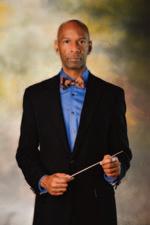
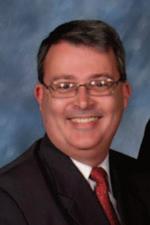
Tri-M Music Honor Society is the music honor society organized and overseen by the National Association for Music Education. Its purpose is to recognize students who excel musically and academically.
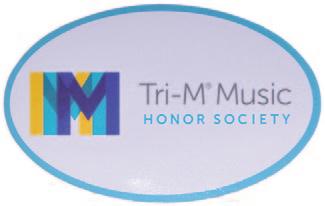
But why should you help to organize a chapter at your school?
Perhaps your students are doing great, but you see the need for them to develop a more giving attitude toward their younger peers. Tri-M can cultivate this in your students and help you recognize those who excel in this way.
Maybe you have a good band program and a good chorus program at your school, but your musicians rarely cooperate between programs. Tri-M can bridge that gap.
Perhaps you see the need for your students to be more involved
in your community and more aware of those in need outside of your rehearsal space or even outside of your school. Tri-M can promote awareness in this way.
Most music programs in the state take some time to recognize students for musical excellence. Many also recognize students for leadership. Tri-M can help you recognize students for these qualities and more!
If your chapter is up and running and beneficial to your overall program, congratulations! In the coming editions, I would like to highlight some of the activities of our outstanding Tri-M chapters, so that we can share the great things going on in Alabama! I can be reached at: jbcclarinetstudio@gmail.com Please send me an email and tell me what is happening with your Tri-M chapter!
Ready to start your chapter? Go to: https://nafme.org/start-your-tri-m-chapter-today/
Jan. 13-15, 2022

For middle school and high school band members, registration opens this fall.

For more information, visit samford.edu/arts/music/honor-band
Contact Ryan Lovell at rlovell@samford.edu
High School (SEUS) Band Clinic – February 3-5

Guitar Festival – February 18
Vocal Jazz & More Workshop – February 23-24
Flute Day – February 26
Clarinet Day – March 26
M.I.C. Check – April 7-8
TROY Jazz Festival – April 7-8
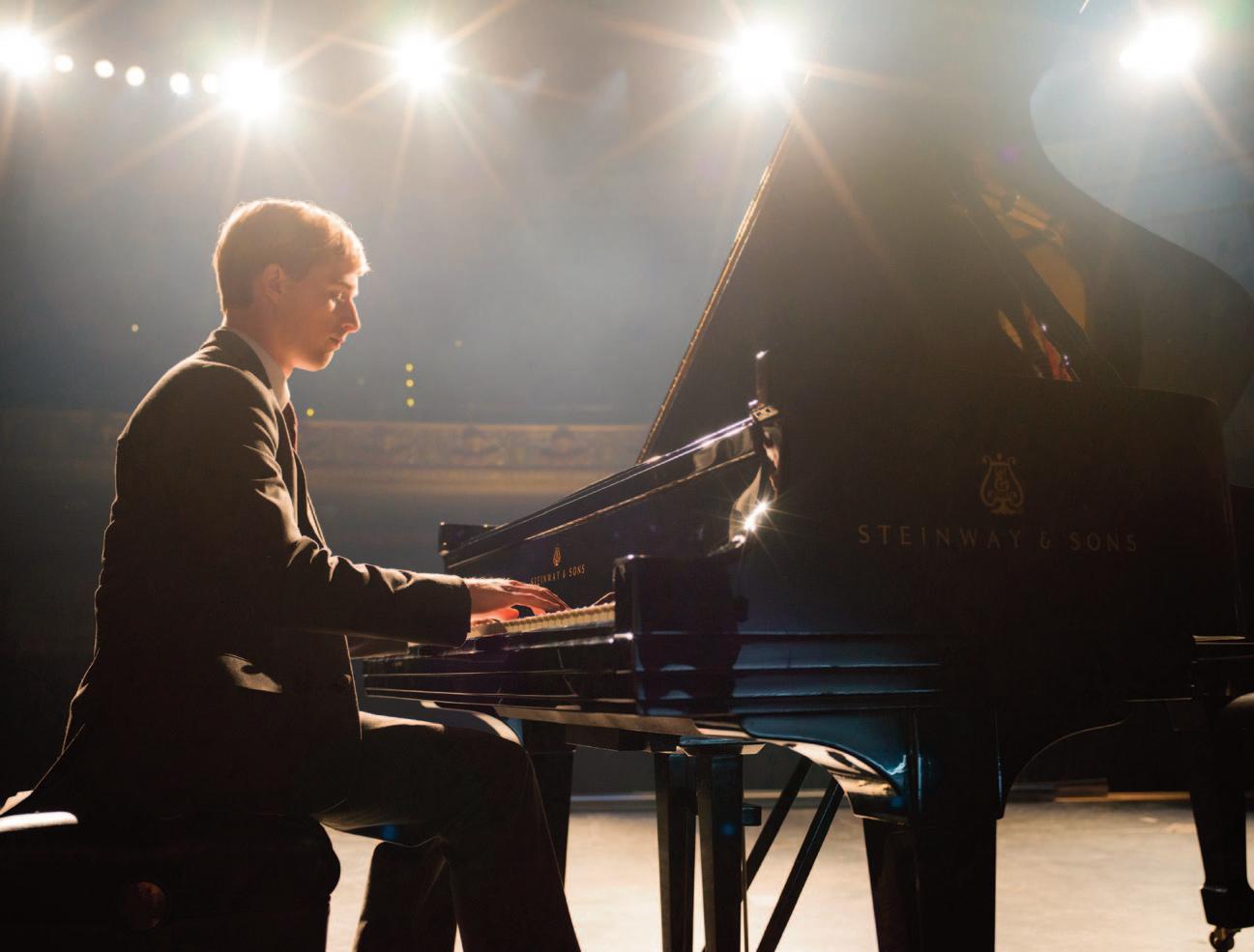
troy.edu/music
1-800-586-9771 • 334-670-3322
Cole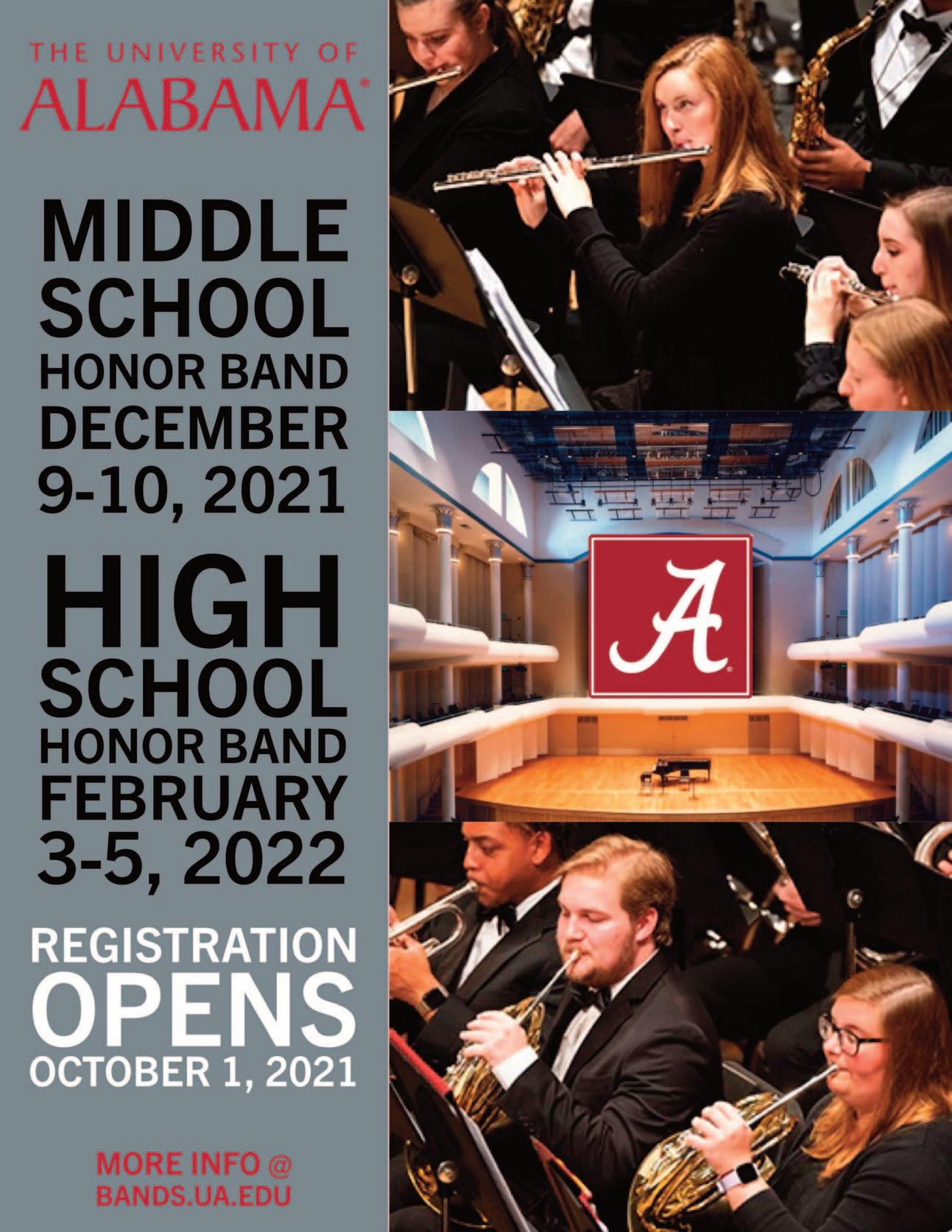
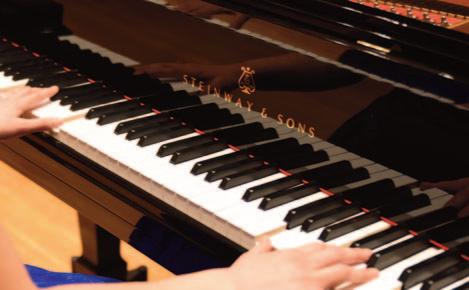

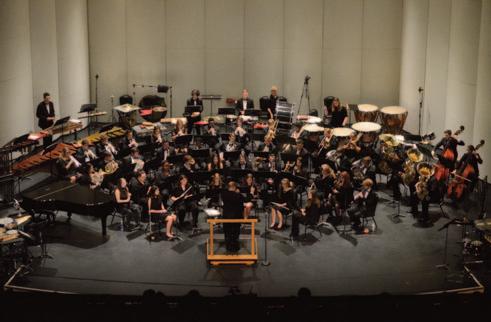

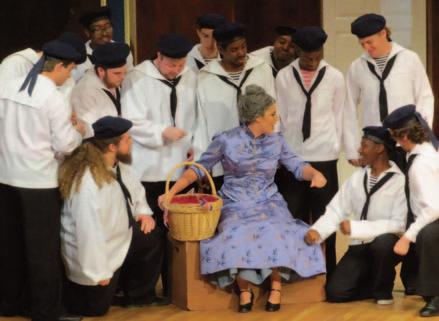







Before I present the 2021-22 All-State Jazz Band Information, I would like to start by saying thank you! Thank you for your support in our state’s jazz events during a difficult year last year. Thank you for the opportunity to serve as the Jazz Education Chair for the next two years, and thank you to Craig Cagle for all his work maintaining a strong program for us to inherit. I am excited to welcome Nic McDonald as our Jazz Education Vice-Chair (Chair-Elect). Mr. McDonald is a trumpeter in the 151st Army Band, the band director at Tuscaloosa County High School, and is active in jazz education. We are looking forward to a fantastic year hearing our state’s best student jazz musicians audition for and perform at the 2022 All-State Jazz Band festival as well as other events that are being planned throughout Alabama.
All-State Jazz Band auditions are some of the earliest auditions on our calendar with this year’s Registration Deadline on Nov. 1, 2021, and the Recording Submissions on Nov. 15, 2021. In the next few weeks, the ABA is looking forward to the development of our new website, alaband.org. Through alaband.org, you can find registration instructions, audition instructions, and audition materials. Registration and audition recording submissions are all done electronically. Some wonderful changes are being made to help prepare students and directors for this year’s audition process. We hope these new components can be educational and develop confidence in auditioning in November.
After a wonderful in-person event last April, the All-State Jazz Band festival returns to coordinate in conjunction with the AMEA conference from January 20-22, 2022 at the Birmingham-Jefferson Convention Complex. We are looking forward to seeing a fantastic panel of clinicians that have been scheduled to work with the students in the 2022 All-State Jazz Bands. The clinicians for this year’s All-State Jazz Bands include Alan Baylock from the University of North Texas, Dr. Steven Roberts from the University of Alabama at Birmingham, James Crumb who is the Fine Arts Consultant for the Birmingham City Schools, and Craig Cagle who is our Jazz Education PastChair.

We hope that you have a successful start to your new school year and achieve the goals you have set for yourself and your program. We also hope to see many of your students involved in the All-State Jazz Band auditions and festival process. Please feel free to contact us with any questions you have along the way.
Benjamin C. Posey, Jazz Education Chair bposey@hoover.k12.al.us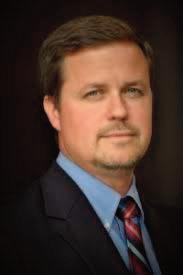

 Nic Mc Donald, Jazz Education Vice-Chair njmcdonald@tcss.net
Nic Mc Donald, Jazz Education Vice-Chair njmcdonald@tcss.net

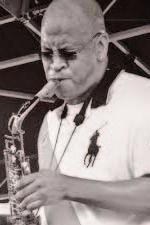
Participation in a chamber ensemble is an excellent yet underutilized way to cultivate musical leadership within ensembles. With most ensembles being under a “timecrunch” during the year, the reliance on the older trusted students to lead sectionals has become a prominent part of summer and fall rehearsals. By advancing the skills of these student leaders within a chamber ensemble program, they will become better musical mentors and coaches for the younger students inside the larger ensembles. Hopefully, these rehearsal strategies can provide some momentum to refining or even implementing a chamber music program.
We all agree that a clear mental image of our desired product, tempo management, and ear-training are all skills that need constant attention, both as an educator and a student. This article will focus on chamber ensembles’ rhythm and style aspects, with a future article that concentrates on ear-training, pitch, and tuning. These exercises are meant to EXPOSE player-to-player inconsistencies, which should then be able to be addressed appropriately by either the students themselves or a coach.
Rhythmic integrity is a vital component of chamber ensemble playing. Typically, chamber ensembles have no conductor, therefore putting more responsibility on each player. By defining a few terms, we can help the ensemble determine how to diagnose their playing inconsistencies. We define “tempo” as the metronome marking and the “pulse” as what you move your feet and dance to. Sometimes tempo and pulse are the same; however, sometimes, they are different. One example of when they are different would be a waltz. The music is clearly in 3; however, the pulse can (and should) be felt in 1. When the pulse becomes too driving in a waltz, it almost
Additionally, we define “rhythm” as what happens “on and between” the beats. Using these definitions, students can realize that they can play “out of rhythm” but still be “in tempo.” Expanding this idea out to a larger ensemble, it would be possible for the low brass accompaniment to be together as a section but out of sync with the subdivision of the melody, say in the flutes. The following exercise would also be beneficial with marching band rehearsals, where you are trying to coordinate the musical note changes with the tempo in the feet.
Add downbeats, play the dots, play the ties.
Using a quarter note as our base rhythm, there are fifteen 16th-note patterns that can be derived. We can whittle that down to eight by using only patterns that 1) have a downbeat and 2) have a variation of 16thnotes after that downbeat with no rests. You can add two more patterns if we allow ourselves to use 8th-note triplet subdivisions. I want to clarify that in this exercise, we are talking about “attack points,” not “note durations.” Of course, two 16th-notes followed by an 8th-note rest is a commonly used rhythm; however, the placement of “1e” is always the same regardless of the length of the second note starting on the “e.” By understanding and practicing these patterns, the students will have a deeper understanding of not only the pulse but music “on and between the beats.”
by Dr. Tom Lukowiczeach other. Here are a few examples of how to utilize this concept. The larger carrot brackets are used to indicate where the change has occurred.
Long notes - Rearticulate each 1 downbeat inside of longer notes. Dotted notes - Change the dotted 2 quarter note and 8th-note into a quarter note and two 8th-notes. Tied notes - Articulate notes that 3 are tied together. Option to divide the half note into two quarters or remain as a half note. Rests on a downbeat - Add a note 4 on the downbeat to allow the rhythm to conform to an established pattern with a downbeat reference.
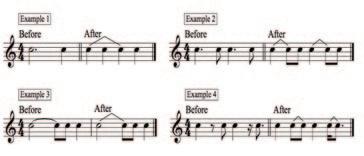

The practical application of this is straightforward, make sure the performer plays a note on every numbered beat. This will provide the framework to determine how the tempo and rhythm interact with
With chamber ensembles, this method of altering rhythms to reflect the tempo will help the students to gain a better sense of vertical alignment and musical interaction between other members of the group. To use this method as a sectional tool, simply count off the members by “1’s and 2’s” with one group playing the altered rhythm and the other playing the “as written” part. Any alignment issues, from previous muscle memory, should be immediately noticeable with the correct subdivisions being played on both sides of the player.
Style is by far the most overlooked aspect of musical performance in young musicians. In my teaching, I try to define style not in terms of articulations, but in terms of the shape of the notes. Articulation styles (staccato, marcato, legato, tenuto, etc.) all have a different sound profile. However, staccato has a different meaning to various composers. Some composers will use staccato to indicate a sharp separation, while others will use it to
indicate more of a “bounce” to the sound. The dreaded ( ) marking above/below a note can indicate legato (full value) or tenuto (full value with a slightly louder, more weighted front), it all depends on the composer’s intent. By assigning a default shape to these articulations, we rob the audience of the composer’s intended idea. An example of these differences can be found in a stereotypical waltz bass line and accompaniment: boom-chick-chick, boomchick-chick; how are the shapes of the second and third beat, how are the right edges (releases) of each note. Are they secco (dry) and there is a harder right edge, where the sound almost immediately comes to a stop, or are they tapered like an elongated upper case “D,” where the sound gradually fades away? These note shapes will create two completely different feels to the audience.
In examples A, B, and C in the diagram below. all of the quarter notes touch the next quarter note, meaning there is no space. However, as you can see with the black background, examples B and C still touch, but the middle and end of the note have different volume levels. This difference in note shape is going to how different styles are created, all while maintaining a connected sound through the instruments. To help achieve a fuller legato style, try having the students listen for the middle and back of the note, with special attention placed on maintaining the same volume between the end of one note and the start of the next (example A). Both examples D and E contain eighth-notes, however the “right edge” of the note is vertical in example D and more rounded in example E. Take a second and sing the waltz figure mentioned above with the different notes shapes of D and E. Finally, example F is an example of dotted eighthnotes with a sixteenth-rest. Again, you can notice the immediate taper and the angular release of each note. Examples D, E, and F are all examples of notes that do not touch the next note, however, each space between the notes is different, thus creating a different style. To help your students learn to hear these different shapes, have each member of the chamber ensemble play their version, finding similarities and differences in the middle and end of each note. By creating a musical vocabulary based on the composer’s intent and correct style, the performers will have a greater

understanding of the overall musical product.
Style is one of the more difficult skills to master with younger players. However, these steps have helped my students understand what to listen for when attempting to match each other.
Step 1 - Change every note to a mezzoforte concert F or

By eliminating hurdles, in this case, dynamics and pitches, we can create a listening environment that is easier to process aurally. This step will allow direct comparison of the player to the player on either side of them. Encourage students to listen and match all of the following: Timing and strength of the left 1 edge (start) of each note. The body of every quarter (or 2 half, or eighth) note should have the same shape. Are the notes touching the next 3 note or is there space, and finally. If the notes do not touch, how is 4 the space between the notes shaped?
we were to transfer this exercise to a larger ensemble, I would select the student who best exhibits the correct style of the piece and use them as an aural example. In this situation, have the model alternate playing with the other section members: player 1 (model) plays, then player 2, then the model, then player 3, and so forth. Use some of the focus points from the above paragraph to help guide the younger player’s ears toward what is different, not just that it is different.
The final step allows for a student to add the next level of scaffolding. We will have the students compare the one-note style model with the “as written” model. Again, using the brass quintet as a model, have two players at a time play the passage as written, with the other members playing the onenote version. This will allow the students to see where they may be changing the style when they add the correct pitches. To implement this step in a large ensemble or sectional setting, count off by “1’s and 2’s” again and have the “1’s” play as written with the “2’s” playing the one-note style model.
While this is not an exhaustive list of methods used to rehearse a chamber ensemble, they will provide a solid foundation to build a cohesive, nonconducted musical ensemble. Ideally, these exercises will develop musical skills and rehearsal methods that will also benefit larger sectional rehearsals with these student leaders as the coach.
Identify a small melodic passage, maybe 2 or 3 bars. Please note: this does not need to be the same measures. Perhaps the trumpet has the melody in bars 1-3, the flutes in bars 18-20, and the tuba in bars 87-89. Using a brass quintet as an example ensemble, play the passage on concert F/Bflat in a round; start with trumpet 1, move immediately to trumpet 2, and then horn, trombone, and tuba in succession. Ideally, the ensemble should immediately be able to identify the differences between players. If
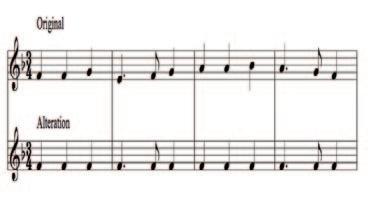
Dr. Thomas Lukowicz is the Assistant Professor of Low Brass at the University of North Alabama and Tuba-Artist Faculty at the Tennessee Valley Music Festival. He has held the Principal Tuba position of the Canton Symphony Orchestra since 2007. Additional performance appearances include the Cincinnati Symphony, Glimmerglass Opera Orchestra, Louisville Orchestra, Pittsburgh Symphony Orchestra, Pittsburgh Symphony Brass, the Chamber Orchestra of New York, the Naples Philharmonic, and the New World Symphony. He is currently the only brass player to have been selected from the prestigious Artist Diploma program at Carnegie Mellon University.


Though I wish it was a quicker process, relationship building can’t be crammed. Though cultivating relationships takes time and effort, it doesn’t have to be all-consuming. To start: Just show up.
We teach because we want to better the lives of people through music. Building relationships with students is a key component of our job. The COVID-19 pandemic has changed so much about our lives, including how we communicate, teach, and learn. This past year, many teachers struggled to teach music remotely, or with hybrid instruction, which made creating and cultivating relationships difficult. Now that most of us are returning to face-to-face instruction, we can combine pre-and post-COVID strategies to help build relationships with students, parents, and community.
I think most of us can remember a teacher from our past who was a subject matter expert but struggled to reach students. Maybe the teacher didn’t use effective instructional strategies, or maybe they didn’t know how to connect with students. While we should be subject matter experts, a mentor once told me, “They don’t care what you know if they don’t know that you care,” (John Maxwell). For meaningful learning to occur, our students need to know we care about them.
Most of our students participate in activities outside of music. We don’t have to stay for an entire game, match, or presentation; but popping in, waving hello, and saying “hi” make a difference. Our students never forget when we show up. When our students see that we care about who they are outside of class, it shows that we value them for more than their musical abilities. Though duties can seem like the dregs sometimes, they’re also great opportunities to build relationships with our students. Talk to them, and ask questions about their interests. Conversations in the hallways between classes, before and after school, or in the lunchroom can have a huge impact. But, we can’t go to every event or have conversations with every student, every day. Here are some ways to reach more students outside of one-on-one, or small group conversations. Check in with students by having them answer “Questions of the Day”, completing “I wish my teacher knew…” cards, or completing exit slips to check for understanding or comfort with class topics. Connecting like this can be done in person, or with technology like Schoology, Google Classroom, FlipGrid, GroupMe, or Zoom. Other great ways to connect with our students is to provide them with age-appropriate freedoms like choice boards for class activities or assignments, shout-outs (calling out classmates for good!), memes, and social media takeovers. Again, these connections can be made in person, or with technology tools. Something that really made a difference in my own teaching was when I showed my students that I valued “their” music. There doesn’t have to be a line between the music kids make in school, and the music they make or listen to outside of school. When I incorporated my students’ music into class, not as an “other,” but as a representation of music worth learning about, it made a world of difference in my students’ attitudes. How can we value our students’ music? The possibilities are endless.
And finally, ask for feedback and use it. As a music teacher educator, I frequently tell my pre-service teacher candidates: “Don’t ask questions if the answers don’t matter.” Usually, the context is: “If you’re going to make students do an activity anyway, don’t ask them if they want to do it. You’ll always have someone who says ‘no’ to be a contrarian.” But nearly all of us has participated in a ho-hum work event where we were asked for feedback but knew our responses didn’t matter because the bosses weren’t going to use the feedback we gave. What a waste of time! We don’t want our students to feel that way. Provide students with opportunities to give feedback like exit slips, Google Forms, ungraded quizzes, surveys, or journaling. Then, use the feedback to change interactions or assignments. Also, feedback is a two-way street. We’ve all been there. We’ve turned in an assignment to the void, received the work back, and thought, “Did the teacher even read or listen to this?” Providing generic feedback like: “Good job!” or “Nice work!” doesn’t help build relationships. Strive to provide feedback that is specific and targeted to the student’s work. What was good about it? Did the student improve? How? What was unique? Providing one specific sentence of feedback can show more engagement and care than a folder full of “Good jobs”. The way you provide feedback is up to you. My students love when I provide audio-recorded feedback because they can hear and interpret my tone more easily than with written feedback. Find what your students like! Incorporating these strategies into our interactions with students can help build strong relationships.
During COVID-19, we learned how important it was to have good relationships with parents. Supportive parents can make or break a program in the best of times, let alone during a global pandemic. We’ve all had our share of unresponsive, or downright hostile parents! While we’ll never be able to totally eliminate some negative parent interactions, what can we do to build better relationships with them? Having a booster program is a great way to involve parents, but admittedly, many booster parents get involved in our programs no matter what! How can we reach parents who might not otherwise get involved? I use a syllabus return form as a simple way to start a conversation with parents about involvement. First, I include the form so parents acknowledge that they have read and understand the syllabus which includes important dates and policies. But near the bottom of the form, I include a portion that asks parents to check or list some ways they can be involved in the program. This might be wardrobe organization or fitting, handing out programs, or setting up audio/video equipment. I even have an option for, “I’m not sure yet” so parents know that I welcome their involvement even if they’re not sure how they can start. Sometimes, parents don’t know that there’s a “place in the choir” for them.
Another way to involve parents is to have students engage with them for class assignments. Everyone is musical, even if they don’t see themselves as musicians. In some classes, I have students talk to their parents or significant adults about their musical tastes. I also find that just talking to parents at events goes a long way. I once taught a general music class that wanted to know about Screamo. Turns out, I’m not wellversed in this genre. But, I knew two parents who were in a Screamo band because of conversations we’d had in the past. I called them, asked if they could come to class, do some demonstrations, and talk with students about the genre. The students weren’t the only ones that learned a ton that day, and I always had folks I could count on in Jim and Marcy! In addition, calling or e-mailing parents about positives are always welcome. We know that for some students, music is the only class where parents are getting a good report home. I use a random number generator paired with student names in a spreadsheet to help “spread the wealth” to make sure I’m not always contacting the same parents with good news. Finally, keep any social media accounts updated and use communication tools like Schoology, Google Classroom, Remind, or GroupMe to help parents know what’s happening, and how they can get involved.
Music teachers can get isolated quickly. Often, we’re the only music teacher in the school or one of two or three. When I’m feeling extra confident, I like to think I’m totally selfsufficient, and I don’t need any help. But honestly, even if I could do it alone, it’s easier, and a lot more fun to have support from my colleagues. Engaging other teachers, staff, and administrators can be as simple as asking them. I’ve found that asking early, and providing a role beyond “crowd control” is important. It also doesn’t hurt to have the students write invitations for their teachers and the administration. How can other teachers and administration get involved in concerts or programs? In talking with colleagues, we’ve found amazing interdisciplinary connections between choral texts, and units on poetry, or historical significance that extends the partnership far beyond having another set of “teacher’s eyes” in the audience. Also, be sure to return the favor. The willingness to help out when another colleague needs us can go a long way. Finally, connect musically with colleagues. A dear friend of mine held a Masked Singer -Esque competition on Instagram among faculty and staff at her school. The administration, teachers, staff, students, and parents all loved the interactions, and she built so many relationships through the experience. The possibilities are limitless for what we can do with our colleagues.
Music programs thrive in communities where they are audible,
visible, and connected. Finding out about festivals or events can help us connect our programs to the surrounding community. Setting up a booth at the local apple festival, caroling at the lighting of the town Christmas tree, or marching in the Memorial Day parade are all ways to remind the community that we’re here and making music. In addition, making connections with organizations like the Rotary Club, Kiwanis, and other civic groups can increase our programs’ reach. Many years ago, I was lucky enough to connect with a local men’s barbershop chorus that operated near the high school where I was a choir director. Some of my students had never heard of barbershop before, (a few thought it was made-up, for movies!). Members of the Derbytown Men’s Chorus came and taught my students about barbershop, sang for us, and invited us to perform on a joint concert. My students learned several tunes, the Derbytown Men performed, and we had a great combined finale which made for an evening of amazing music. Not only did we make great connections in our community, but my students learned so much. A few students even went on to participate in Harmony Camps in the future! Every community is different and has unique experiences and connections to be made, sometimes you just have to ask!
If reading this makes you feel overwhelmed, I understand. Remember, building relationships can’t be crammed. It doesn’t happen overnight, nor should it. Something this past year and a half has taught us is that we need rest and space. Part of having healthy relationships is creating and maintaining boundaries. It’s okay for us to not check our email, to not call that person back t now, and to go home. It’s okay for us to have a social media account where we’re not identifiable, and we don’t add students or parents as friends. It’s okay for us to have no-work hours. This profession does not require us to be available at all hours of the day and night. I often ask myself, “Is this an emergency?” The answer is almost always no, and the response can wait. With that in mind, we shouldn’t share personal contact information with students and parents. They will use those contacts when we least want them to, and for purposes we did not intend. A good way to maintain privacy is to use communication tools like school e-mail, school phone numbers, and apps like Remind, GroupMe, or Schoology. Another important boundary to maintain is the line between “Friend” and “Friendly”. I had to learn this distinction early in my career. Our students need us to be resources and advocates for their best interest. Sometimes, that means making reports that we’re required to make when a student wishes we’d kept their secret as their friend would. Being friendly and connecting with students is crucial, but befriending students means crossing ethical boundaries.
I have also learned that I can’t be perfect. It took me much longer to accept this, and honestly, I’m still trying. I always try to set up a classroom where I think everyone will feel welcomed, accepted, and comfortable. I try to build the strongest relationships with my stakeholders. But every year I make mistakes. Maybe I say something that comes across in a way I didn’t intend. Maybe I do something that makes someone feel uncomfortable or excluded. It happens. But, when I’ve built strong relationships, students, parents, or my colleagues feel comfortable telling me how they feel. Because of our relationship, they know the mistake isn’t intentional, and that I’m doing my best. Accept imperfections. Something that has meant so much to me, and I think, means a lot to my students is a sincere apology. Apologize, learn from the experience, and do better next time. Creating these boundaries and realistic, livable expectations for ourselves is an important part of maintaining healthy relationships.
I’m not going to close by saying, “And please, make time for self-care.” We’ve heard it ad nauseum for 18 months. We should practice self-care, but I don’t know what that means for everyone. What I do know is that building strong relationships with stakeholders, and maintaining boundaries make my teaching life easier, which gives me more time for self-care. To say we’ve endured hardships this past year and a half might be the understatement of the century. But, I hope everyone is feeling as re-energized as I am. We’re being afforded the wonderful opportunity to see our students again face-to-face. Remember that relationship building doesn’t happen overnight, and it doesn’t have to be all-or-nothing. Use the face-to-face strategies and the technology tools we’ve learned to build healthy, strong relationships. Wishing you all an amazing year!

Dr. Morgan C. Soja (she/her/hers) is the Director of Music Education at Samford University. She has certificates in Kodaly Levels I and II, Orff Level I, and GIML Introductions to MLT and Elementary General Music coursework. She has served as an adjudicator and clinician in North and South Carolina and is an active participant in the Supporting Beginning Music Teachers area of strategic planning and action of SMTE. She has presented frequently at state and national NAfME conferences.
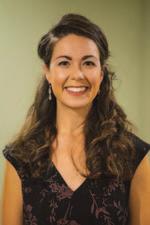
Colleges and Universities are encouraged to submit newsworthy material for Campus Connections
We are grateful to AMEA for providing this opportunity to share with our music colleagues and music students across the state.
In his book The Seven Habits of Highly Effective People, author Stephen R. Covey makes the following observation:
The main thing is to always keep the main thing the main thing.
As we begin this new school year, it seems important for all of us as music education professionals to consider the main things we focus on in our music programs each day and over time to
ensure that they are thoughtfully based upon the why of our music teaching. These main things are up to each of us in the context of our individual teaching situations.
It seems equally important for all of us to evaluate the how of our music teaching regularly, and to be prepared and willing to make adjustments in our teaching as needed to remain relevant and effective both now and in the future. The unexpected will happen – again.
As music professionals – music teacherswe all need to lead in response to rather than in reaction to change. What we do each and every day matters. And our most important work may, indeed, lie ahead of us.
We enter the world with nothing. We leave the world with nothing.
It’s what we do “in between” that matters.
“…in a dissonant world, every moment of harmony counts – and if we share music, we might just shout in anger a little less and sing in unity a bit more. Or so we can hope.”
Jon Meacham We look forward to continuing to make music together.
High School (SEUS) Band Clinic –February 3-5
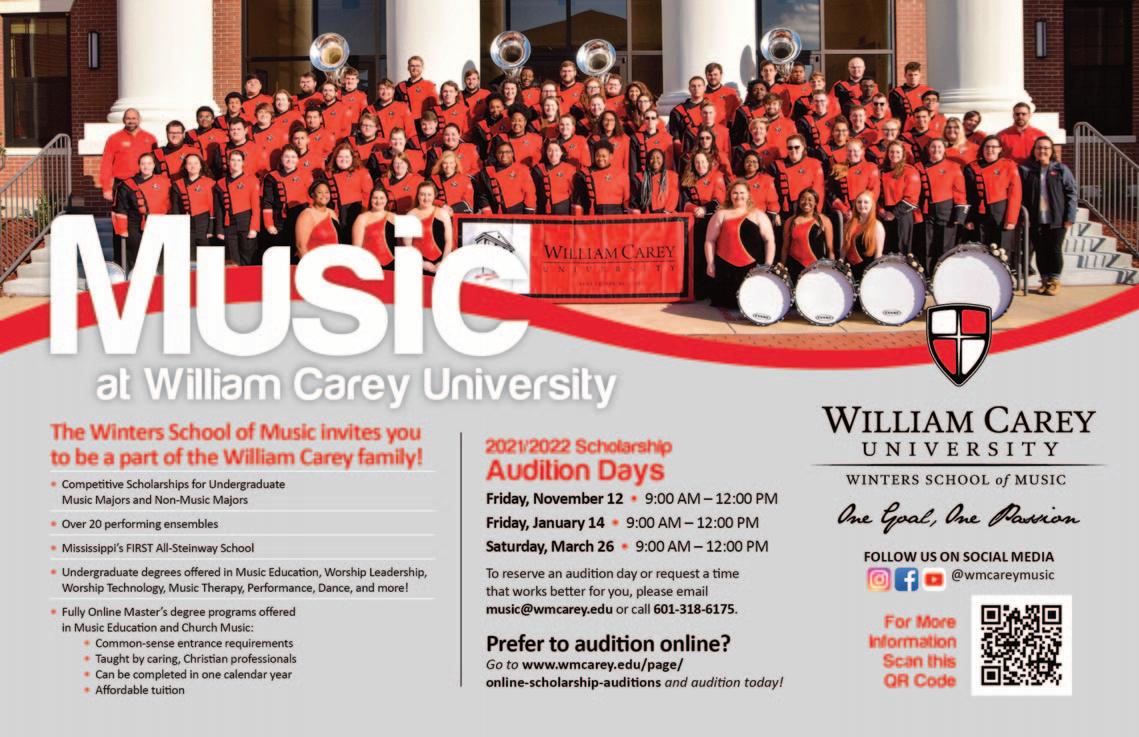
Guitar Festival – February 18
Vocal Jazz & More Workshop –February 23-24
Flute Day – February 26
Clarinet Day – March 26
M.I.C. Check – April 7-8
TROY Jazz Festival – April 7-8
troy.edu/music
Asthma is a chronic respiratory disease that can affect not only breathing but also quality of life. According to the Asthma and Allergy Foundation of America (2019), over twenty-five million Americans suffer from asthma with the Center for Disease Control citing that one in every thirteen people have this respiratory disease. Asthma is found more commonly in grown women compared to men and, overall, more common in children, with asthma being reported as the leading cause of school absences among children (Asthma and Allergy Foundation of America, 2019). Even though asthma is more commonly diagnosed in children with the symptoms lessening over the years for some, many may experience the onset of asthma in their adult years (American College of Allergy, Asthma, and Immunology, 2014). Singers who suffer from asthma may experience difficulties performing long phrases, holding extended notes, finding proper support for their tone, or maintaining stamina throughout a recital or concert. All this can leave singers feeling frustrating and at times defeated. Knowing more about the condition and what can be done to help lessen the effects on vocal production is important for all singers who suffer from asthma.
 by Lynn Holliman
by Lynn Holliman
Asthma is a disease of the lungs that is ‘characterized by inflammation and constriction of the bronchial airways leading to the lungs’ (Gick & Nicol, 2016, p. 726). During an asthma attack, the chest can feel tight, and the asthmatic will feel breathless as they wheeze and cough which can induce a panic attack as the patient struggles to open their airways (Cohn, 1998; Gick & Nicol, 2016; Loeding & Frownfelter, 1983; Wade, 2002). Asthma symptoms can range from mild discomfort to severe breathing difficulties that can lead to hospitalization or, in the most severe cases, death. Someone suffering from an asthma attack may be unable to verbalize that they are having an attack, or even realize they are having an attack. Symptoms that are observable include throat clearing, sudden tiredness, nervousness, a dry cough, or a sudden change in voice quality (Loeding & Frownfelter, 1983).
Asthma attacks can be brought on by a variety of triggers and often depends on the patient as to what specifically affects them. Reactions to different allergens such as pollen or animal dander, changes in the weather, or any other irritants that may be breathed in can cause an attack (American College of Allergy, Asthma, and Immunology, 2014). An attack can also be triggered by an illness especially one that may be targeting the respiratory system and can even
be triggered by exercise (American College of Allergy, Asthma, and Immunology, 2014). Research has shown that exercise-induced asthma may not be triggered by the act of exercising itself but instead is caused by ‘changed in airway tone produced by exercise-induced hyperventilation’ (Cohn, et al., 1991, p. 332) which means that any form of hyperventilation, whether from exercise or an anxiety attack, can bring on an asthma attack. The most common treatment for asthma is medication, the most common of which being medicated inhalers such as Albuterol, Tilade, and Intal which are steroidal inhalers (Cohn, 1998). Other forms of treatment include oral medication such as Theophylline, Zafirlukast, Zileuton, or other forms of corticosteroids (Cohn, 1998). Those whose asthma is triggered by allergens could benefit from allergy shots that can be administered at the doctor’s office or home. Allergy shots help to build a tolerance for allergens that may specifically affect someone by ‘slowly increasing does of allergens’ (Cohn, 1998, p. 52).
For singers with asthma, there is a good possibility that they will experience some difficulties with certain aspects of their vocal production. Wade (2002) lists some common complaints from singers as ‘being unable to phrase the music correctly, lacking proper breath support for airflow, and needing additional breaths’ (p. 32). These common complaints may be due to the tightness an asthmatic will feel in their chest as well as the ‘shortness of breath’ (Loeding & Frownfelter, 1983, p. 9). Other effects can include a loss of some of the singer’s range and even issues with vocal control (Cohn, 1991). An increase in phlegm production from the lungs that move into the throat can cause the singer to feel the need to clear their throat often. The frequent wheezing and coughing that come with an asthma attack can lead to irritation and swelling of the vocal folds. This irritation and swelling can cause the singer to have poor vocal quality and, in some cases, nodules or some other severe vocal fold disorder (Loeding & Frownfelter, 1983).
Asthmatics may feel fatigued due to the stress that can be caused by chronic asthma attacks, which can include physical and vocal fatigue (Cohn, et al., 1991; Loeding &Frownfelter, 1983). Singing is physical activity the involves the whole body similar to any other exercise. The air support required as well as the other physical aspects of performance may be hindered in an asthma patient that is prone to exercise-induced asthma attacks. Hyperventilation that can occur during any form of exercise causes the airway to become narrow ‘or bronchospasms’ (Cohn, 1998). Cohn (1998) describes how
exercise-induced asthma is associated with the act of singing and how that can lead to an asthma attack and decreased vocal function:
Singing, with its associated increased ventilation, is analogous to exercise in the potential for stimulating airway narrowing. The lungs, representing an important component of the support for the voice, are critical to the production of the vocal sound. Bronchospasm and airway narrowing, whether present before starting to sing or provoked by singing itself, alter support and thus the ability to sustain a prolonged performance. (p. 51)
It is important to note that the medications used to treat asthma can also have adverse effects on singing. As stated before, the most common treatment to stop or prevent an asthma attack is an inhaler, many of which contain corticosteroids. These corticosteroids have been found in some cases to cause dysfunction of the vocal folds for asthma patients that have had ‘long-term exposure to inhaled corticosteroids’ (Cohn et al., 1991, p. 336). While an oral bronchodilator may be able to open the airway more effectively for some asthma patients, the medication has been found to cause reflux issues as well as lead to a singer having a minor audible tremor in their voice that can be especially heard during softer passages (Cohn et al., 1991).
Good breathing technique is the foundation for any singer. Developing that foundation could be an issue for those who have impaired lung function. Breathing exercises involve learning how to utilize a more abdominal breath as opposed to a higher breath in the upper chest, and how to control the breath to maintain air support for passages in the music. Researchers have been examining the effects of the breathing exercises that are a part of vocal training to see if there are any benefits for singers who have asthma. Thomas and Bruton (2014) divided breathing exercises specifically for asthmatic into three distinct groups. The first is breathing retraining in which the exercises are aimed at retraining breathing patterns. The second group, respiratory muscle training, work specifically to increase ‘the strength and/or endurance of the respiratory muscles’ (Thomas & Bruton, 2014, p. 315), and the third, musculoskeletal training, are exercises that work to improve posture and help with flexibility in the thoracic cage. Thomas and Burton (2014) focused mainly on breathing retraining and proposed that this form of training has encountered more attention from researchers over the past few decades.
Authors Loeding and Frownfelter (1983) suggest that ‘breathing retraining must be emphasized if the client’s breathing pattern is abnormal and/or accessory muscles of respiration are used’ (p. 10). They discussed exercises in which the singer can achieve a free and mobile chest wall by performing stretching exercises while focused on their breath. Grammatopoulou et al. (2011) used breathing retraining techniques such as education in symptoms specific to asthma and normal breathing patterns, and practicing nasal and diaphragmatic breathing, short breath holds, as well as performing adapted singing and speaking patterns while performing some form of physical activity. The results of the six-month study showed an improvement in a participant’s ability to control their asthma more effectively and a decline in episodes of hyperventilation and bronchoconstriction (Thomas & Bruton, 2014). A study of elementary school-age children with asthma found that after vocal/singing exercises the participants had an increase in their lung function or were able to maintain their lung function more effectively (Wade, 2002). Other research shows limited improvement in lung function after training with breathing exercises, and while results of other studies are less consistent, there is evidence that training in certain breathing techniques is resulting in some reduction of daily asthma attacks and inflammation of the airways (Ritz & Roth, 2003). There is still much research to do as new technology becomes available to measure lung function and new breathing techniques are being explored.
Conclusion
Most researchers into the possible benefits of breathing exercises for asthma agree that it is important for the asthmatic to incorporate breathing exercises into their daily practice (Clift & Gilbert, 2018; Goldenberg, 2018; Loeding & Frownfelter, 1983; Thomas & Bruton, 2014; Wade, 2002). There is no cure for asthma, and there is still much to learn about the disease and how it affects each asthmatic differently. Singers with asthma not only may experience the effects of asthma on their vocal production, but they may also experience a setback in their vocal career because of their decreased lung function. It is important for those who
suffer from asthma, and vocal instructors who deal directly with singers with asthma, to become educated on the effects of asthma on the voice, and the latest in breath training techniques that may counteract the effects of asthma on vocal production.

Lynn Holliman is a graduate of Delta State University with a Bachelor's in Music Education and received her Master's in Music Education from the University of Southern Mississippi. She is in her seventeenth year at Riverside Schools in Avon, Mississippi as the music director, teaching high school and junior high choir, as well as elementary general music where she directs the elementary bucket drumline, the annual sixth grade musical, and the pre-k through sixth grade Christmas musical. She is the recipient of the 2011 Mississippi Music Educators Association Outstanding Young Music Teacher of the Year Award and is currently working on her Doctorate of Music Education from Auburn University.
American College of Allergy, Asthma, and Immunology. (n.d.). Adult-onset asthma

https://acaai.org/asthma/types-asthma/adult-onset-asthma
American College of Allergy, Asthma, and Immunology. (n.d.). Asthma facts.
https://acaai.org/ news/facts-statistics/asthma
Asthma and Allergy Foundation of America. (2021, April). Asthma facts and figures. https://www.aafa.org/asthma-facts/
Clift, S. & Gilbert, R. (2018). Can singing have a beneficial effect on lung function and breathing for people with respiratory illness. In G.F. Welch, D.M. Howard, & J. Nix (Eds.), The Oxford Handbook of Singing. (pp. 888-902). Oxford University Press.
http://doi.org/10.1093/oxfordhb/9780199660773.013.51
Cohn, J.R. (1998). Asthma and the serious singer. Journal of Singing, 54(1), 51-53.
Cohn, J.R., Sataloff, R.T., Spiegel, J.R., Fish, J.E., & Kennedy, K. (1991). Airwary reactivityInduced asthma in singers (Arias). Journal of Voice, 5(4), 332-337. https://doi.org/ 10.1016/j.jvoice.2017.03.021
Gick, M.L. & Nicol, J.J. (2016). Singing for respiratory health: Theory, evidence, and challenges. Health Promotion International, 31(3), 725-734. http://doi.org/10.1093/heapro/dav013
Goldenberg, R. (2018). Singing lessons for respiratory health: A literature review. Journal of Voice, 32(1), 85-94. https://doi.org/10.1016/j.jvoice.2017.03.021
Grammatopoulou, E.P., Skordilis, E.K., Stavrou, N., Myrianthefs, P., Karteroliotis, K., Baltopoulos, G., & Koutsouki, D. (2011). The effect of physiotherapy-based breathing Retraining on asthma control. Journal of Asthma, 48, 593-601.
https://doi.org/10.3109/ 02770903.2011.587583
Loeding, R.L. & Frownfelter, D. (1983). A regimen for professional voice users and singers with mild, chronic asthma and bronchitis. The NATS Bulletin, 40(1), 8-12. Ritz, T. & Roth, W.T. (2003). Behavioral interventions in asthma. Behavior Modification. 27(5), 710-730. http://doi.org/10.1177/0145445503256323
Thomas, M. & Bruton, A. (2014). Breathing exercises for asthma. Breathe, 10(4), 313-322. http://doi.org/ 10.1183/20734735.008414
Wade, L.M. (2002). A comparison of the effects of coal exercises/singing versus musicassisted relaxation on peak expiratory flow rates of children with asthma. Music Therapy Perspectives, 20(1), 31-37. http://doi.org/10.1093/mtp/20.1.31
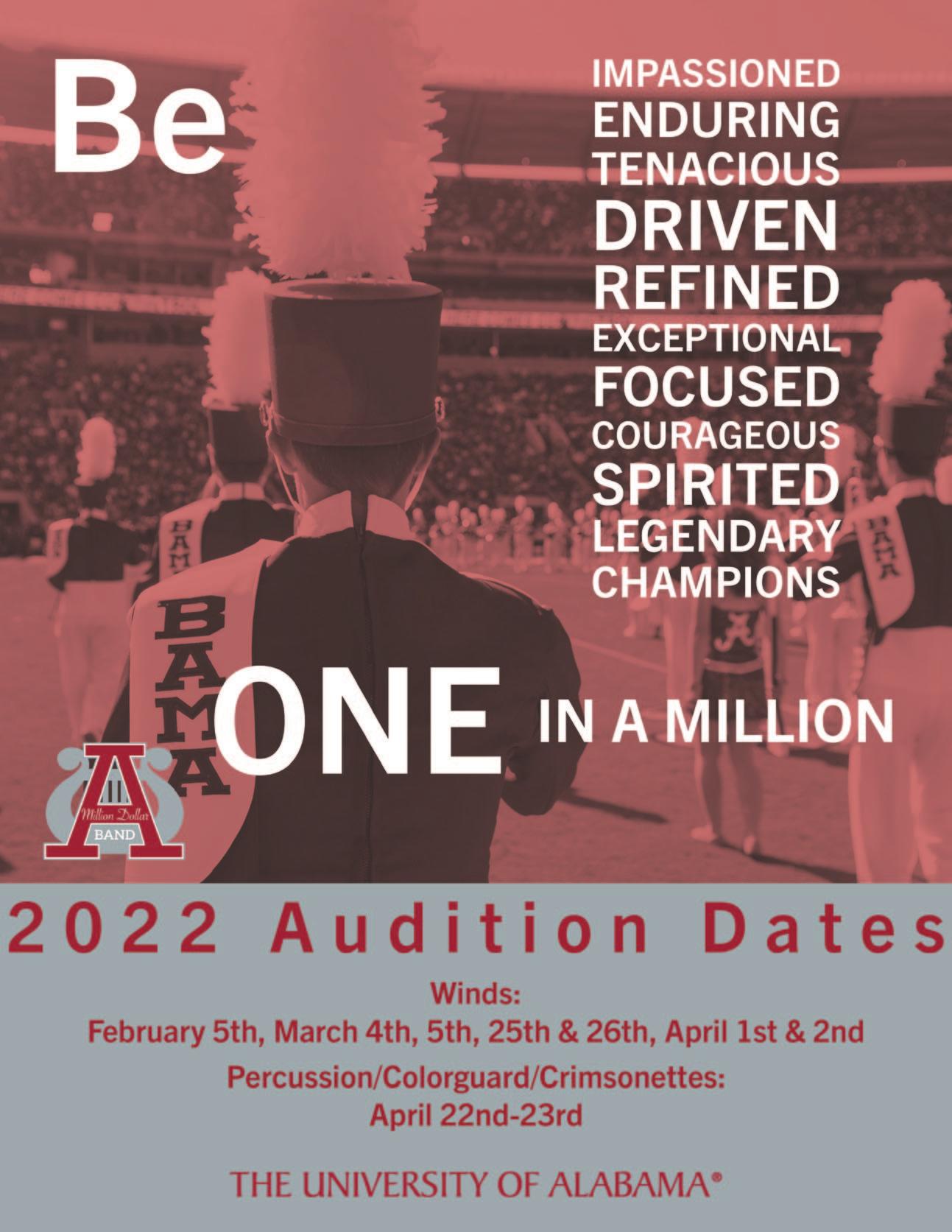
For High School and Middle School Choral Groups, Symphonic Band, Orchestras, Concert Band, Jazz Band, Marching Band, and Color Guard.
Groups are returning year after year to the most fun festival in Florida.
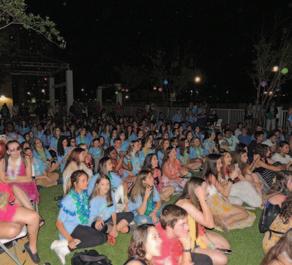


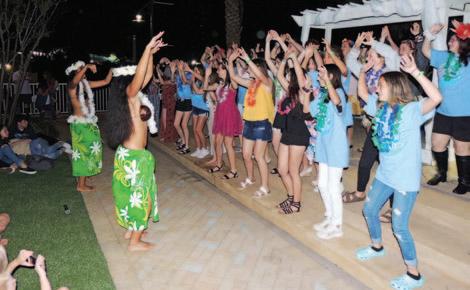
www.panamacitybeachmusicfestival

Where does opportunity exist, how do we find it, and what do we do with it when it is found? How do we create opportunities that are inclusive and available to all? I once heard someone say, "If you can't find opportunity, you must create opportunity". As music educators, we are creative people and we try to create meaningful experiences for our students and community. However, sometimes we are limited in resources and we have to be extremely creative. Sometimes the answer can be found right in front of us. Sometimes the answer must be discovered by looking into the mirror in self reflection.

As we get closer to moving past COVID-19, we should strive to rediscover our methodologies and rekindle the opportunity to collaborate. Consider ways to improve your own musicianship. Education is a life long process. Strive to be humble and commit to continue self-discovery. Consider what experiences truly provide long lasting impressions and inspiration for you and your students. Consider mentorship as a teaching model for your students. Go beyond the classroom. If we hold ourselves accountable, we can continue to grow.
One of the greatest tools an educator can use is modeling. Pick up your instrument and shed! The struggle is real and getting into the fight for progress is so much more meaningful when we all acknowledge that we are all students. Opportunity! Consider your colleagues. What can we learn from one another to better ourselves? Consider opportunities within your own town, county, or state. Consider what new experiences we can offer our students. Seek out those opportunities!
Yes, COVID-19 created obstacles and we had to restructure our pedagogy out of necessity. Through this process, we may have discovered some positive strategies that can be used moving forward. Opportunity!
As we are moving past Covid-19, I am pleased to announce a few positive developments within our state. A new website (www.alabamajazz.org) is in the process of design and will be launched early Fall 2021. This website will serve as a one-stop resource for jazz in our state. A calendar will list concerts, festivals, masterclasses, lectures, tours, etc. There will be a listing of all of the jam sessions within our state. There will be a listing of jazz

educators and freelancers within our state for those interested in booking lessons, lectures, and performances. There will be a listing of college and university scholarships available within our state. This of course will be an evolving website and I'm certain we will add even more resources. The hope is that this effort will connect our community, students, performers, enthusiasts, and educators. Stay tuned and keep an eye out for the official launch this Fall!
I am also happy to report the formation of two brand new big bands, "The Alabama Jazz Collective" and "The Alabama Jazz Orchestra". The Alabama Jazz Collective is made up jazz educators throughout the state, at leading Universities, Colleges, and High Schools. This group aims to be a driving force in jazz education, performance and outreach. The Alabama Jazz Orchestra is comprised of top music freelancers within our state that will focus on the traditions, history, and people of this genre. This group will entertain, advocate, educate, and enrich our community through high level performance. These are just some of the examples of what is coming out of COVID-19. Keep an eye out for both of these groups!
Concerts and festivals are beginning to appear. I am happy to report that the 2021 GSCC Jazz Festival, "Celebrating Jazz in Alabama" will be November 4, 2021. This FREE jazz festival takes place in Gadsden and highlights HS, MS, College, University, community, and professional jazz ensembles. Performing groups will have the option of being critiqued by leading jazz educators through written comments. Guest artists for this year's festival will include: Sherman Irby on saxophone from Jazz at Lincoln Center, Greg Gisbert on trumpet, and the Army Jazz Ambassadors (Army's Premier Big Band). There will be performances all day from regional jazz ensembles, an education workshop in the afternoon, a series of finale concerts, and an after party "jam session" to conclude the festival. This is an all day/evening FREE jazz festival and there is more! This year will also highlight a new all-star high school jazz ensemble directed by a leading jazz educator and the group will perform on the festival with MU2 James Brownell on trombone. Please feel free to contact me if you would like information on this festival or the all-star hs jazz ensemble audition process. Please send an email to mleder@gadsdenstate.edu or call 256-549-8394. There are several other festivals in the works around our state. Keep an eye out for them!
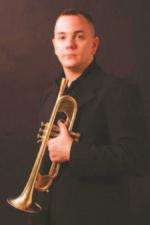
Opportunity. Consider the opportunities within your classroom, in your community, within our state, and the opportunities that exist within ourselves. Keep your creative mind engaged and inspired. Reach out and connect to the jazz community that exists within our state. I look forward to seeing everyone on the bandstand!
In the sprit of swing, Dr. Matt Leder
Each teacher has shared their three favorite resources and a little about themselves. Please reach out if you have any questions.

Melissa McIntyre is the K-5 Music Specialist at Vestavia Hills Elementary Liberty Park and has been an elementary music educator in the state of Alabama for 24 years. She holds Bachelors and Masters degrees in Music Education from the University of Montevallo and is certified in Levels I, II, and III in the Orff-Schulwerk Method. She is a member of AMEA where she has held leadership positions of President and Secretary in the Elementary/General Division. She currently serves as the Festival Director of the AMEA Elementary Music Festival. She resides in Helena with her family.
Three Resources I Love:
1. Book: Luigi’s Listening Lab - This book has beautiful electronic listening maps, facts about the composers, and activity ideas.
2. Musication - this youtube channel has lots of fun playalongs for handbells, boomwhackers, unpitched percussion, and body percussion.
3. Because - by Mo Willems - beautiful picture book that tells the story of a young girl who grows up to become a composer and how her first composition is inspired by events that led to her love of music. There is a nice lesson package on Teachers Pay Teachers that goes along with this book that can be used by the music specialist, but also works very nicely in a “Sub Tub.”
Debbie Pugh is beginning her 38th year teaching music. This year she will begin her 19th year at Vestavia Hills Elementary – Cahaba Heights, teaching elementary music. Debbie’s teaching career started in instrumental music as Band Director at Randolph County High School. She continued her journey as Band Director at Tarrant High School and Tarrant Middle School and then joined the Vestavia Hills School System as Assistant Band Director at Vestavia Hills High School, where she had 13 wonderful years. The experience of teaching alongside the music professionals in Vestavia Hills and learning from them, has been one of the highlights of her life. Mrs. Pugh received a bachelor and master’s degree in Instrumental Music from Jacksonville State University, studying percussion under Craig Biegler and David Walters. She also has a Masters in Counseling and Guidance from the University of Montevallo. Debbie is married to Richard Pugh. They have 5 children and 9 grandchildren.
Three of my Favorite Resources:
1. Movement Favorites: Move It! By John Feierabend and “Draw a Bucket of Water”
2. Music Theory Foundations: Quaver resources to teach meter – this really clicks with the kiddos Quaver songs – Sixteenth Note Samba and The Triplet Song
3. Creating and Performing: Music Composition, Kid Stix by Artie Almeida and Galop by Ken Berg
Deanna Bell is the music teacher at Vestavia Hills Elementary East, conductor of the Birmingham Wind Ensemble, and an adjunct music professor at the University of Alabama at Birmingham. Deanna earned her Bachelor of Science in Music Education from The University of Alabama and her Master of Music Education from Samford University. In 2010 and 2019, Deanna was awarded National Board Certification in Early and Middle Childhood Music. Deanna earned her Orff Certification from Samford University and Kodály Certification from The University of Montevallo. Deanna is the President of the ‘Sweet Home Alabama Kodály Educators’ and the Alabama Chapter of the American Orff-Schulwerk Association. She is a District 3 Chair for the Alabama Music Educators Association and a contributor to the Ala Breve Magazine. Deanna is the 2016-2017 Elementary Teacher of the Year for Vestavia Hills City Schools, a 2019 Semifinalist for the Grammy Music Educator Award, a 2021 Quarterfinalist for the Grammy Music Educator Award, a 2022 Legacy Candidate for the Grammy Music Educator Award, and the 2020 Lacey Powell AMEA Outstanding Music Educator.
My Three Favorite Resources:
1. American Methodology: ISBN-13 978-1889967127
2. The Orff Source Books: West Music, Item no. 805034, 840239, and 841116
3. Music K-8 Subscription: www.musick8.com
Trudye Confessore is beginning her 14th year as Music Educator at Vestavia Hills Elementary West, a National School of Character. She is a University of Missouri-Columbia graduate with a Bachelor of A&S degree with an emphasis in Flute Performance and Theory and Composition, and has a Master of Music degree in Flute Performance from Florida State University. Prior to teaching at West, Ms Confessore taught preschool music at St Peter’s CDC in Hoover, AL, and worked as Personnel/Production Manager at The Florida West Coast Symphony (now the Sarasota Orchestra) and Sarasota Music Festival. She is certified in Orff-Schulwerk, having completed Levels 1-3 and a Master class, as well as in the Kodály concept, completing Levels 1-3. She is a member of NAfME, AMEA, AOSA, and SHAKE, and is a cantor at St Peter’s Catholic Church in Hoover, AL, and Our Lady of Sorrows Catholic Church in Homewood, AL.
Three of my Favorite Resources:
1. Laurie Zentz’s Heart Chart - This comes with a teaching manual, a metal chart with quarter rests, and many magnetic hearts and rhythm squares.
2. New England Dancing Masters Alabama Gal, GIA Publications - This selection of nine dances and singing games is a go-to for folk dancing! My particular favorites are “Alabama Gal” and “Kings and Queens.” (Thanks, Rachel Gibson, for introducing me to “Kings and Queens” in my Kodály Levels!)
3. StoryTime Quintet lesson units, for info contact storytimequintet@gmail.com. This woodwind quintet has recently produced materials including videos, slideshows, activities and teacher guides for Ferdinand the Bull, Peter and the Wolf, Tortoise and the Hare, and will soon include “Carnival of the Animals.” Lessons are downloadable with unlimited access for future use. The quintet is fabulous, the arrangements are excellent, and very affordable. They also have a FB page and a free “Sleigh Ride” video that my students loved!
Kate Donaldson is the music educator at Dolly Ridge Elementary in Vestavia Hills, AL. She just finished her 30th year teaching elementary music. She graduated from Auburn University with a bachelor's degree in Choral Music Education under the guidance of Dr. Thomas Smith and Dr. Claude Gossett. Upon graduation she never intended to teach school, and immediately began her pursuit of a Masters in Music Therapy from Florida State University with Dr. Jayne Stanley and Dr. Cliff Madsen. Circumstances led her to her first teaching job with the Department of Defense Dependant Schools at RAF Upper Heyford and RAF Croughton in Oxfordshire, England. After three wonderful years she was hooked on teaching and fell in love with elementary-age students. She was so blessed to teach for ten years with Auburn City Schools. The last seventeen years she has been teaching in the Vestavia Hills City School System. Kate completed her National Board Certification in 2009 and 2019 and has earned her Level 1 certificates in both Orff and Kodály. She is the 2018-2019 Teacher of the Year for her school and has been a mentor to several interns. Kate lives in Birmingham with her wonderful husband and two sons. My Favorite Resources:
1. iDoceo app: I can see student pictures and mark medical notes and music goals all in one place. It takes a little while to set up, but totally worth it throughout the year. It’s great to leave photo seating charts for a sub!
2. Artie Almeida’s Parachutes, Ribbons, and Scarves activities are great, especially for Form.
3. MUSICPLAYONLINE is a fantastic, affordable resource (great rhythm Kodaly Orff resources all in in one pace.) I love the video examples. They are great for new teachers!
4. David Row’s blog:
5. Facebook Groups: Elementary Music Teachers, AMEA, Musicplay, Quaver: The elementary questions, suggestions etc… help you to feel more of a community and help you fully utilize some of the resources your school system might have.
We hope you will consider these items for your classroom. We send our best wishes for a safe, happy, healthy school year! We look forward to seeing you all at the 2022 AMEA Conference in Birmingham, Alabama, January 20-22, 2022!
Orff News: Summer Chapter Share
Alabama Chapter of AOSA, Saturday, July 31, 2021, 9-11, Online
Fall AMEA/AOSA/SHAKE Fall Workshop
Clinician, Rhonda Tucker
Eastmont Baptist Church, Montgomery, AL, October 16, 2021, 9-12
2021 American Orff-Schulwerk Association National Conference, North Charleston, SC, November 3-6, 2021
2022 Alabama Chapter of AOSA Spring Workshop, Samford University
Jennifer Donovan, Clinician, March 12, 2022, 9-3
Kodály News:
2021 SHAKE ‘Back to School’ Kodály Workshop, FREE Lea Jones Hoppe, Clinician
Saturday, August 14, 2021, In Person, Vestavia Hills Elementary East 9-12
Fall AMEA/AOSA/SHAKE Fall Workshop
Clinician, Rhonda Tucker
Eastmont Baptist Church, Montgomery, AL, October 16, 2021, 9-12
2022 Organization of American Kodály Educators National Conference
Pittsburg, PA, March 3-6, 2022
2022 SHAKE Spring Kodály Workshop
Rachel Gibson, Clinician, Saturday, April 2, 2022
Vestavia Hills Elementary East 9-3
All National Music
P.O. Box 5502, Navarre, FL 32566
Best in Class Tours, LLC
P.O. Box 770963, Winter Garden, FL 34777
Arts Music Shop, Inc.
3030 East Blvd, Montgomery, AL 36116
Gadsden Music Company
P.O. Box 132, Gadsden, AL 35902
J.W. Pepper and Son, Inc.
9053 Riverside Pkwy, Lithia Springs, GA 30135
Madison Band Supply
1604-B Hughes Road, Madison, AL 35758
Marchmaster Inc.
PO Box 73379, Newnan, GA 30271
Our Group Tour LLC
4903 Ashley Circle SE, Owens Cross Roads, AL 35763
Southern Performances
PO Box 6852, Gulf Shores, AL 36542
Super Holiday Tours
116 Gatlin Ave, Orlando, FL 32806
University of Alabama at Birmingham
950 13th Street S., Birmingham, AL 35294
University of South Alabama
LPAC 1072, 5751 USA Drive South, Mobile, AL 36688
Strengthen your school’s Music. Honor. And Society. Starting a Tri-M ® Music Honor Society chapter will help show the value of your music program to the sc�oo�.�����i�����so���n�����our�s�u��n�s�������o�in�� them to:
•Build an impressive record for college

•Grow as leaders in music
•Serve their community
Ready to start a chapter? Visit MusicHonors.com
For more information and to register visit:
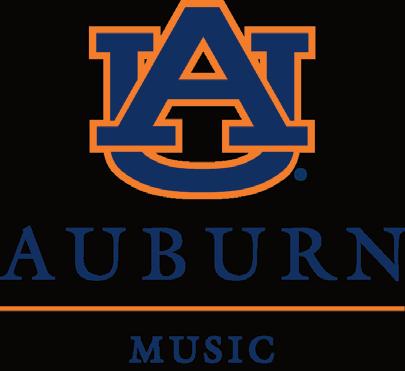

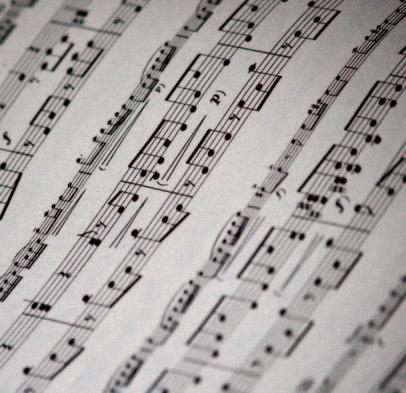
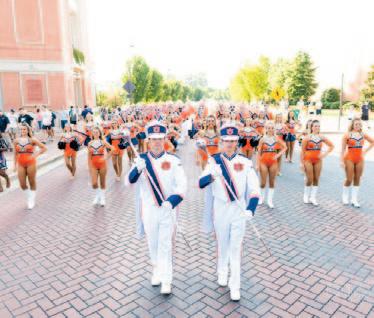

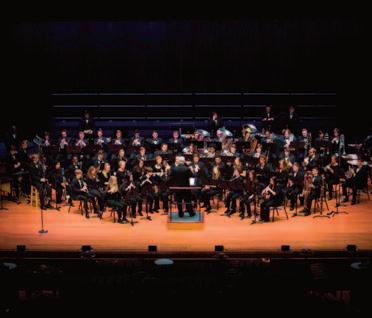



(800)681-4188
Choice Music Festivals • Cruise Festivals • Festival Disney Festivals of Music • Field Studies Carnegie Hall Performance Fiesta-val Music Festivals • Heritage Festivals Manhattan Concert Productions • MidAmerica Productions Music in the Parks • OrlandoFest • Music USA Orlando Southern Star Music Festival . . . AND MORE

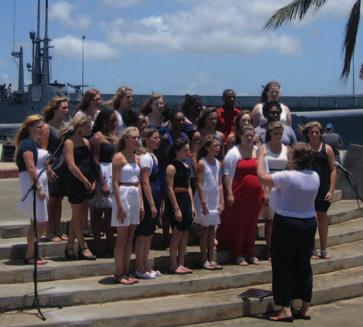
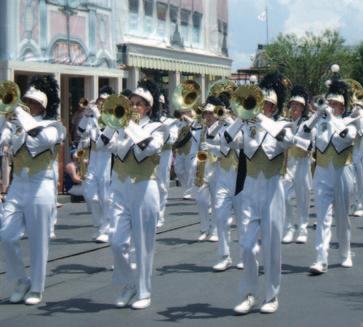
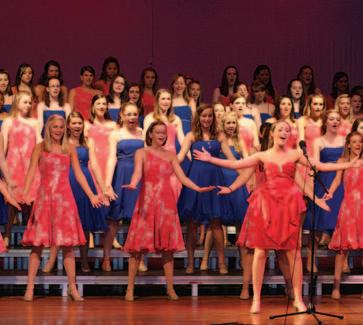


Atlanta, GA • Branson, MO • Chicago, IL • Gatlinburg, TN
Orleans, LA • New York, NY • Orlando, FL Saint Louis, MO • San Antonio, TX • Toronto, ON Washington, DC • Williamsburg, VA . . . AND MORE Sample itineraries are available for each destination. If the festival or destination of your choice is not listed, call for a custom proposal.


Contact SarahMartha Parker at (205) 458-0086 or sarahmartha@travellandmark.com to begin planning your tour today!


















































